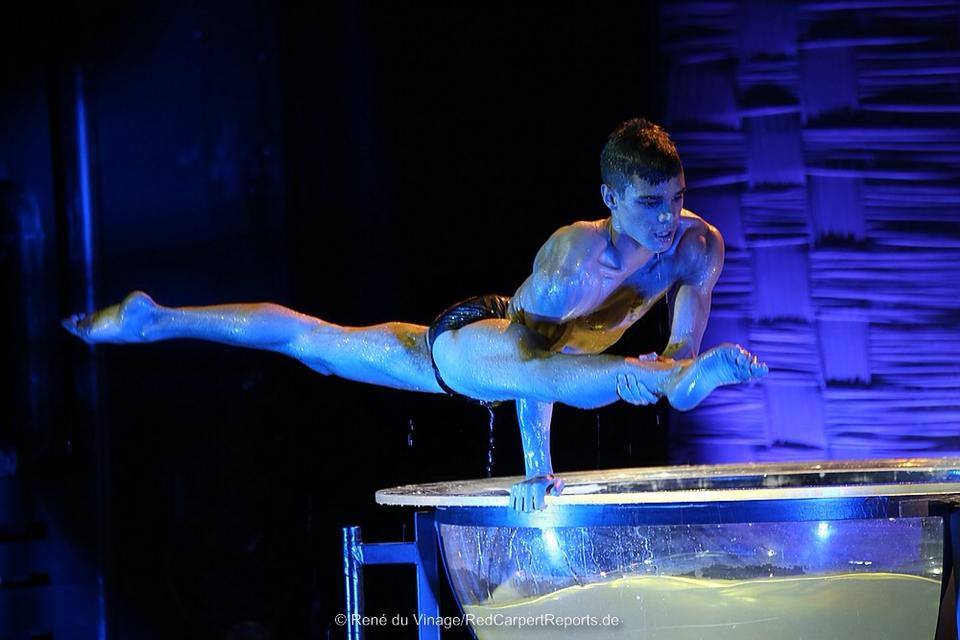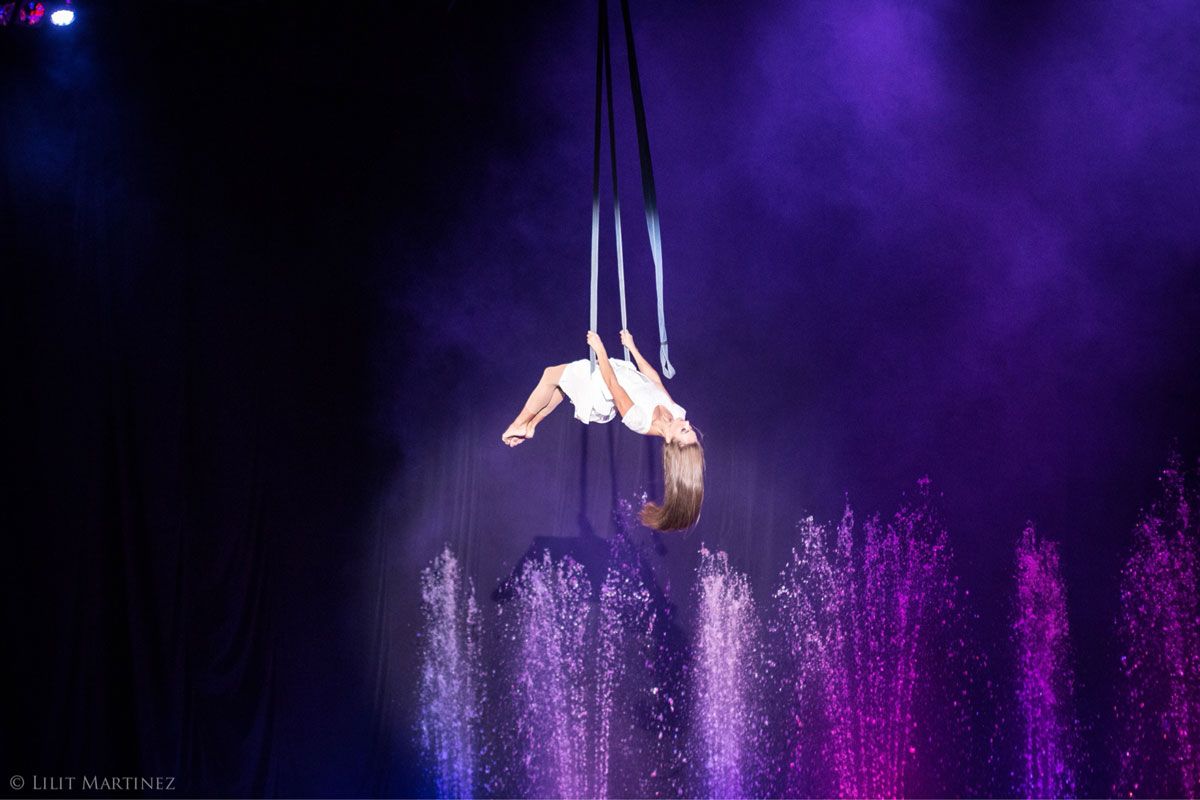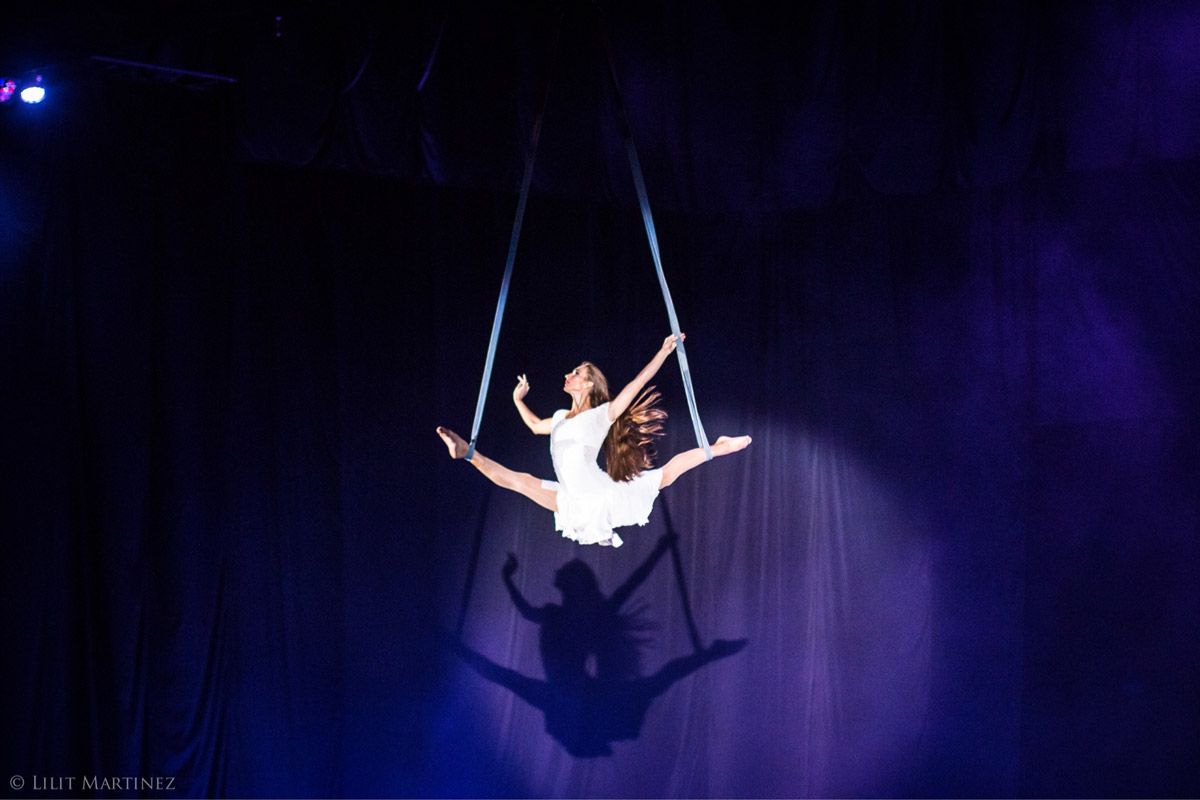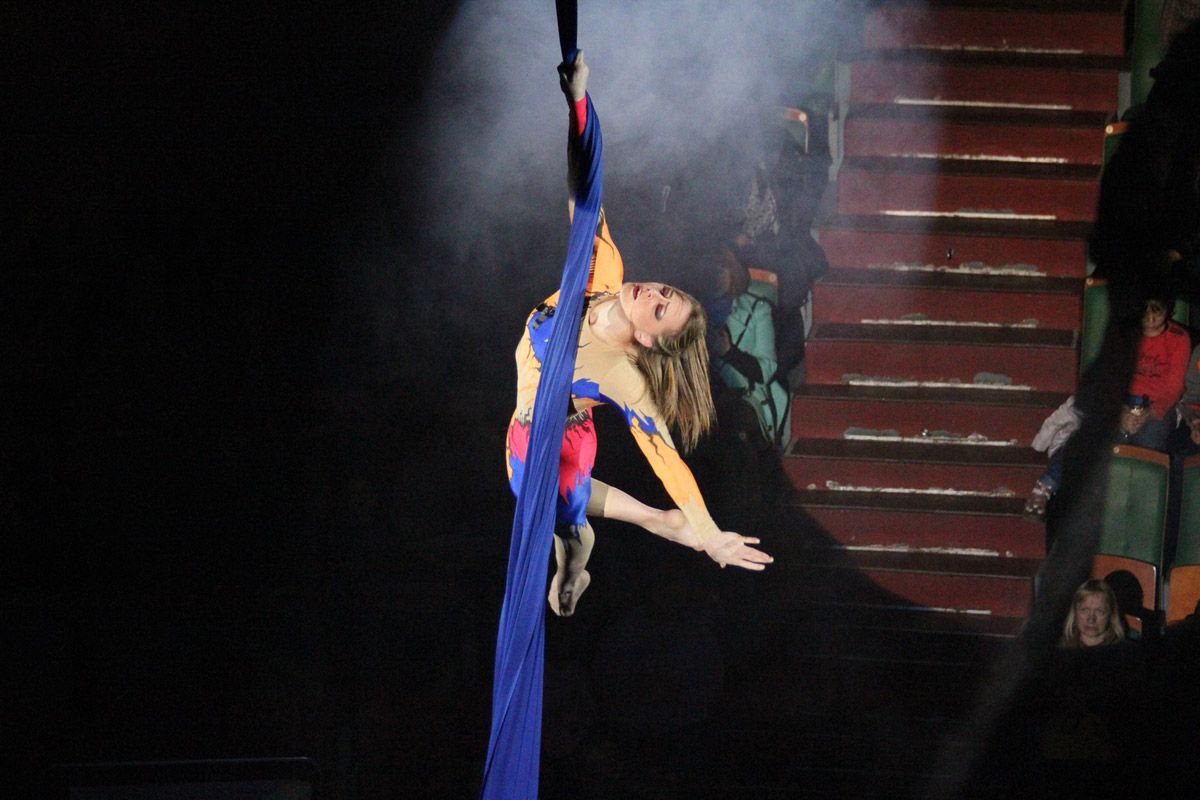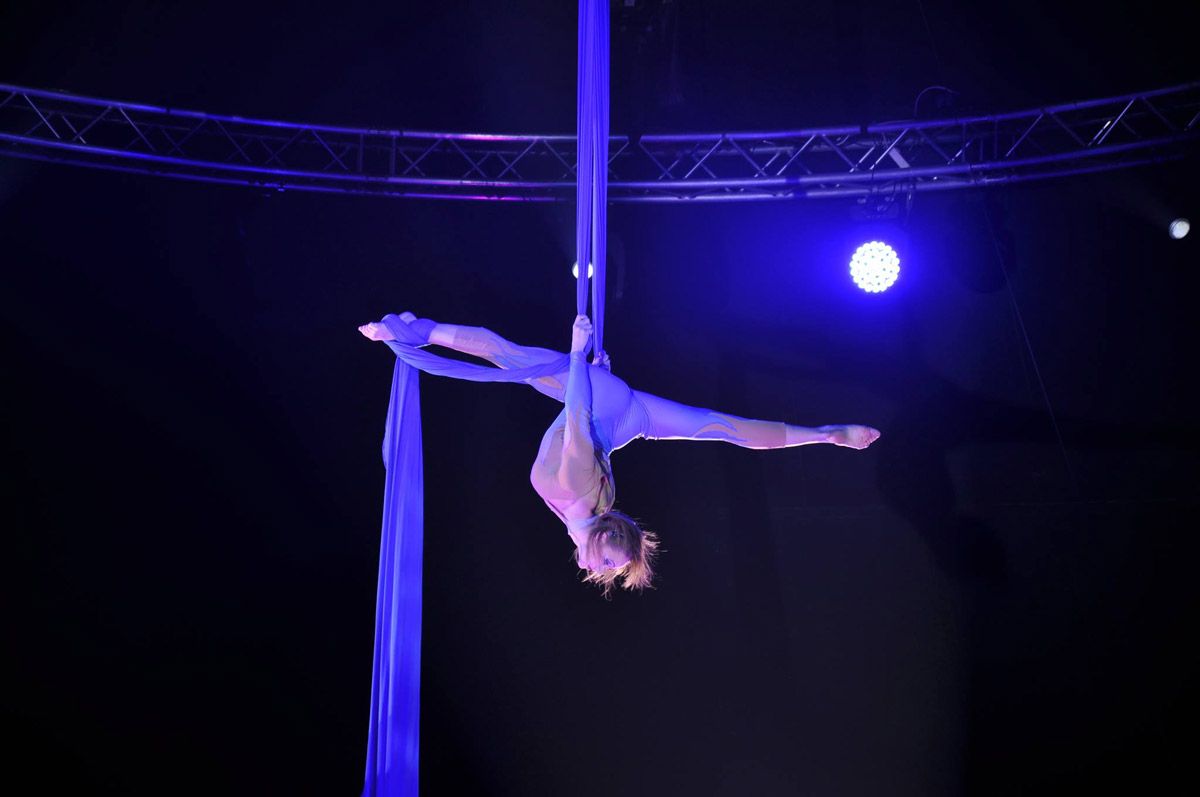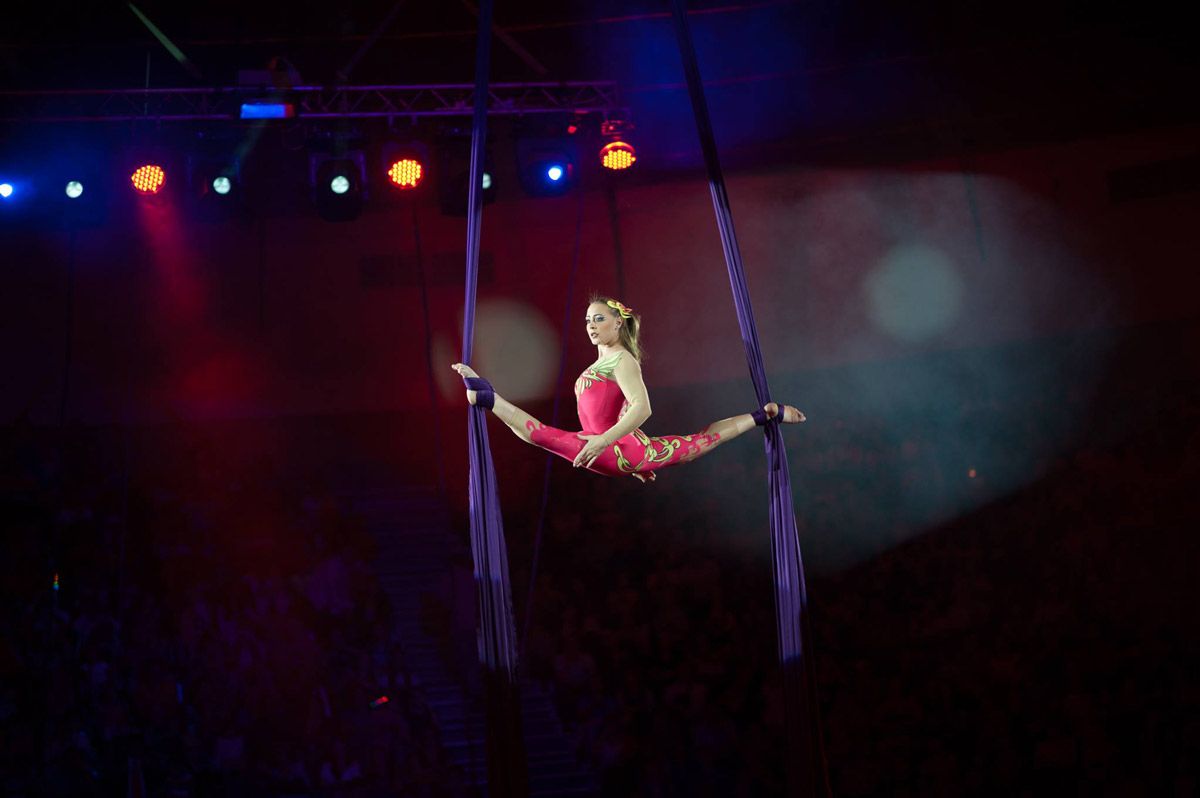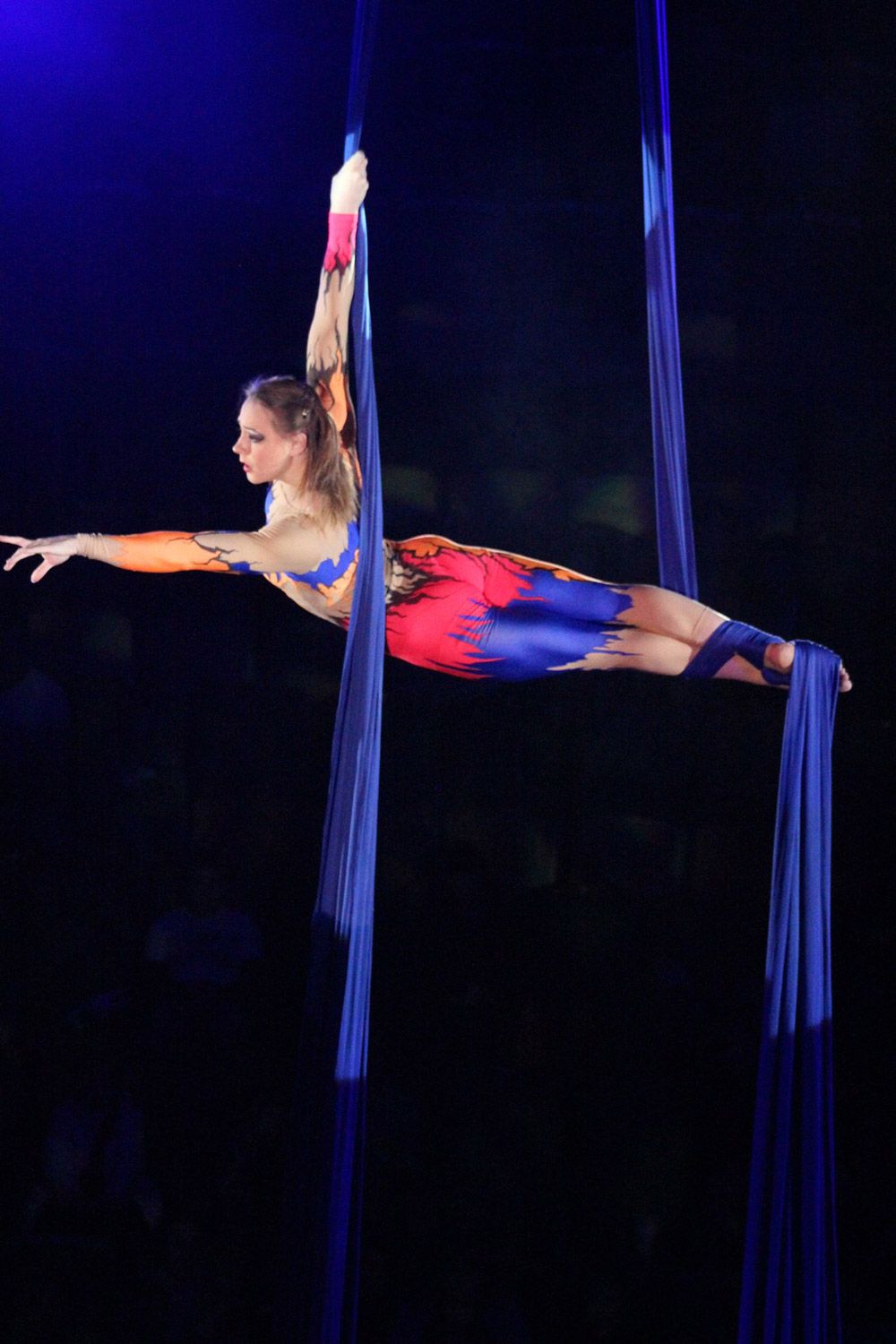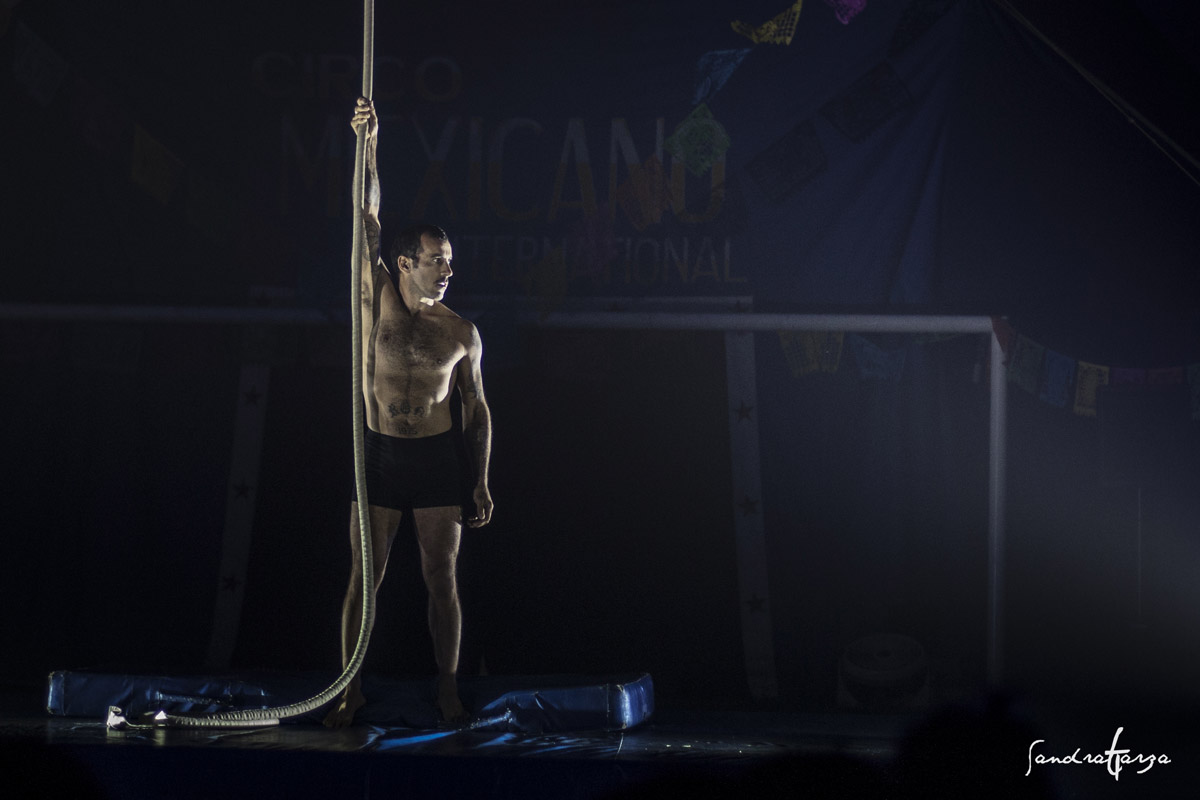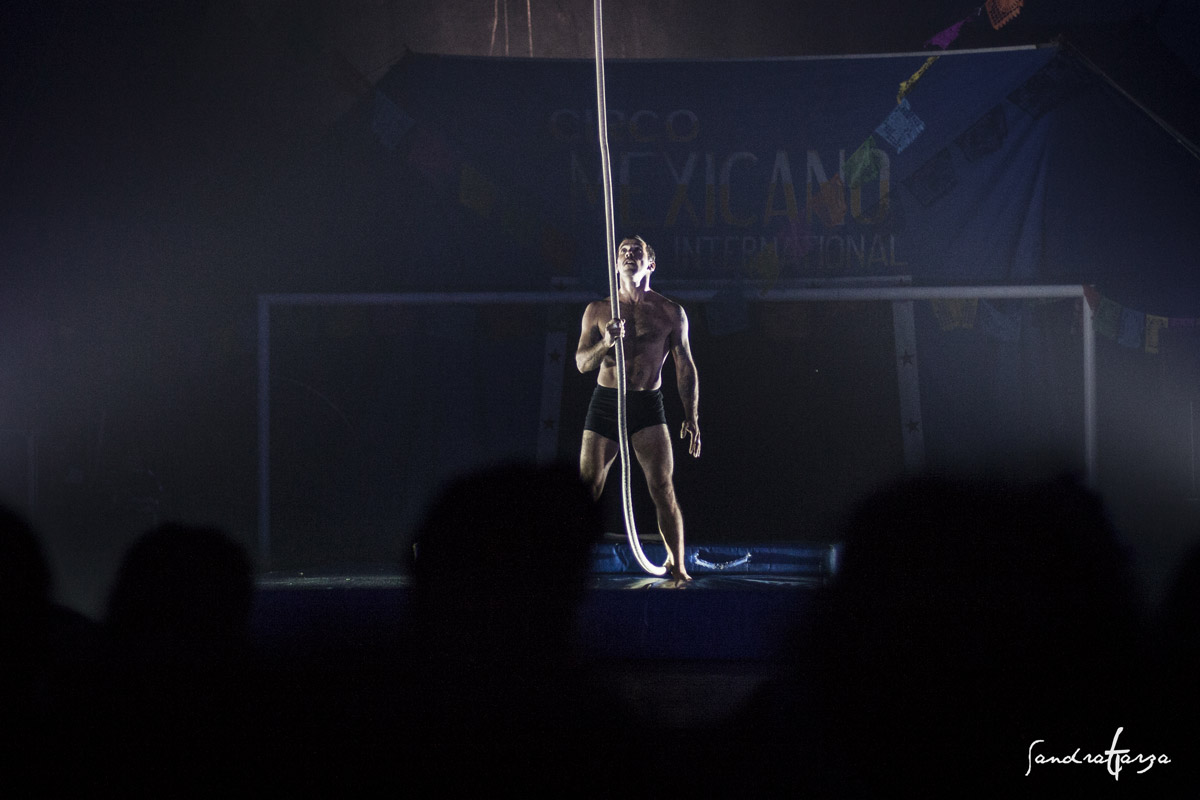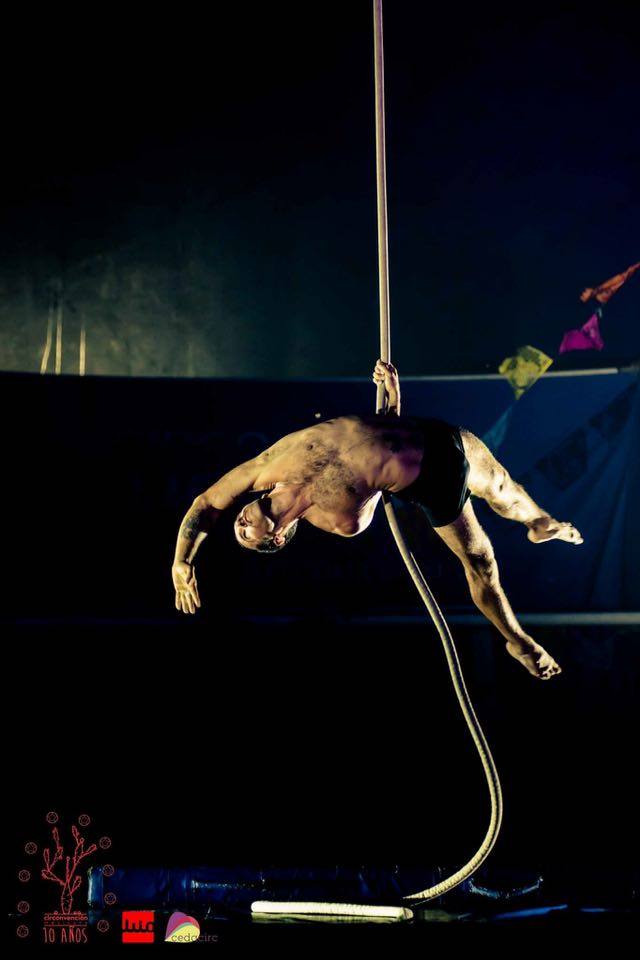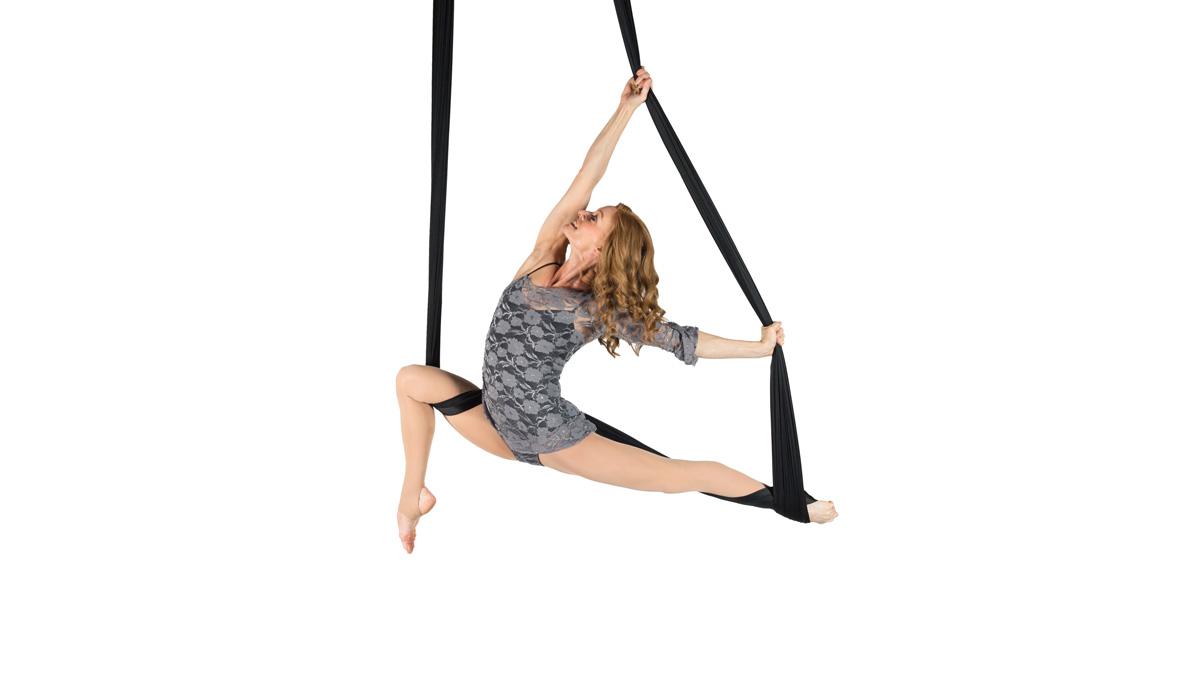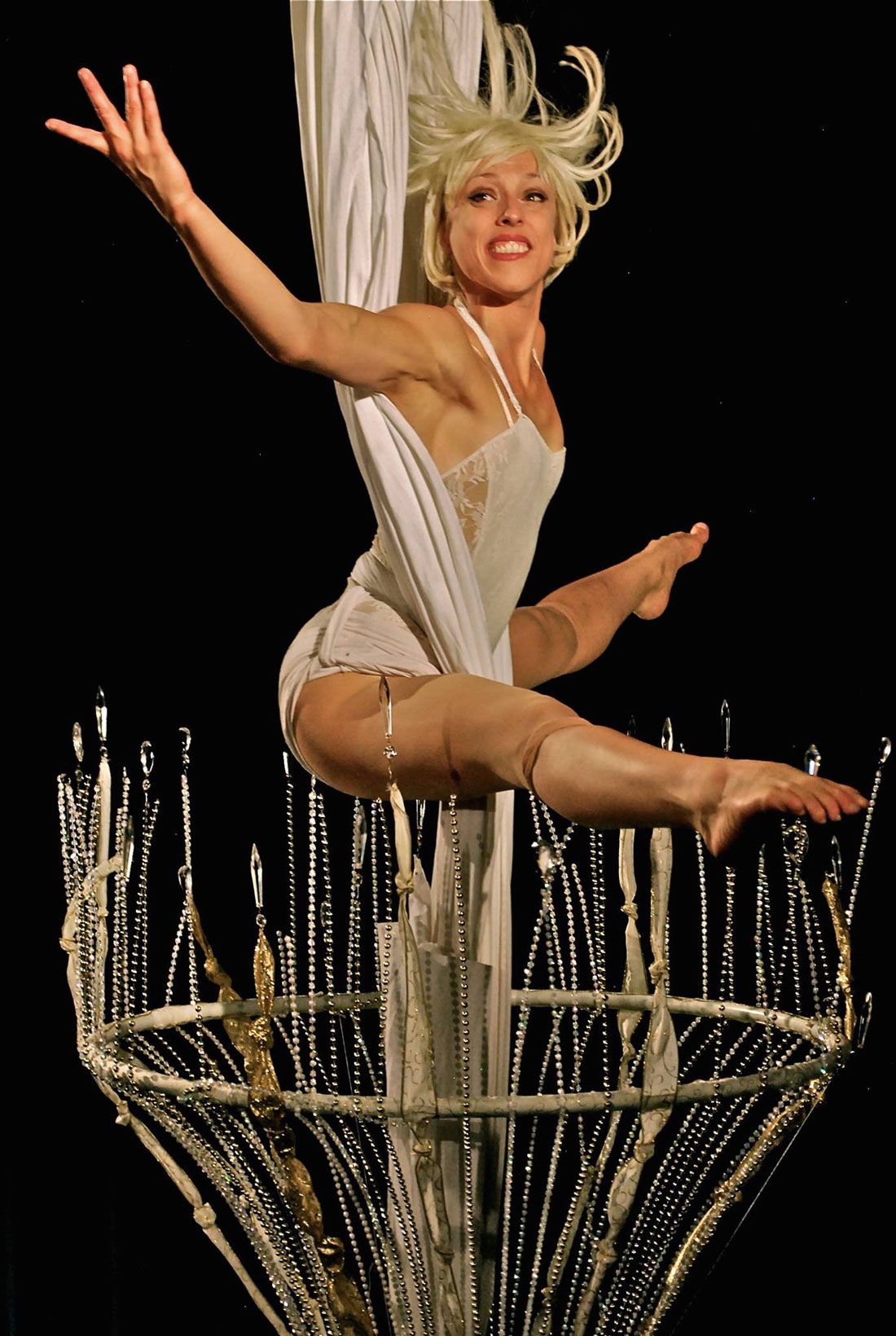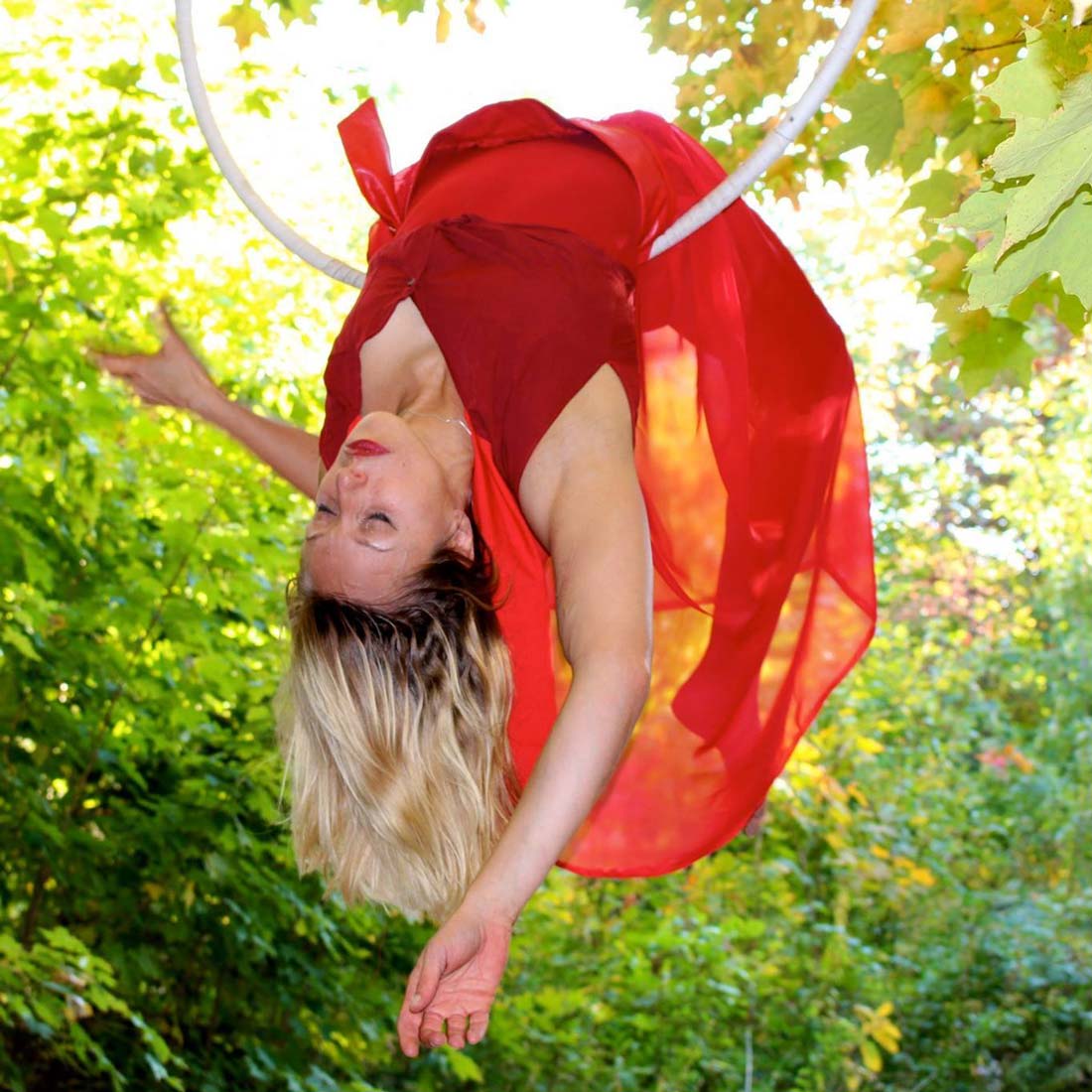Brandon is a self-made aerial acrobat, currently living in Las Vegas. He has a background in gymnastics, dance, and musical theater, and currently performs and teaches on Aerial Fabric, Straps, Hammock, Spansets, Chains, Rope, Rings, and other specialty apparatus. He currently holds the title of US Aerial Champion, and teaches classes and privates at Trapeze Las Vegas: The Studio.
1. How did you come to circus arts and how was your process of developing your style?
I took my very first Aerial Silks class in January of 2013, and from that moment on began pursuing my passion for the art, until I could begin to make a full-time living in the circus sphere. I trained with my instructor, Darla Davis, at Aeris Aerial in Sandy Utah for 2 ½ years, and her teaching philosophy is very technical, with a focus on basics, incremental progression, and polished advanced skills (which oddly was also very similar to the philosophy of my gymnastics coach Christopher Sommer of Gymnasticbodies). Because of this focus from my coaches, my style is very classical, with traditional lines and excellent technique, but I have combined that with my background in music (piano, french horn, voice, and musical theater) to create a lyrical style to my aerial as well.
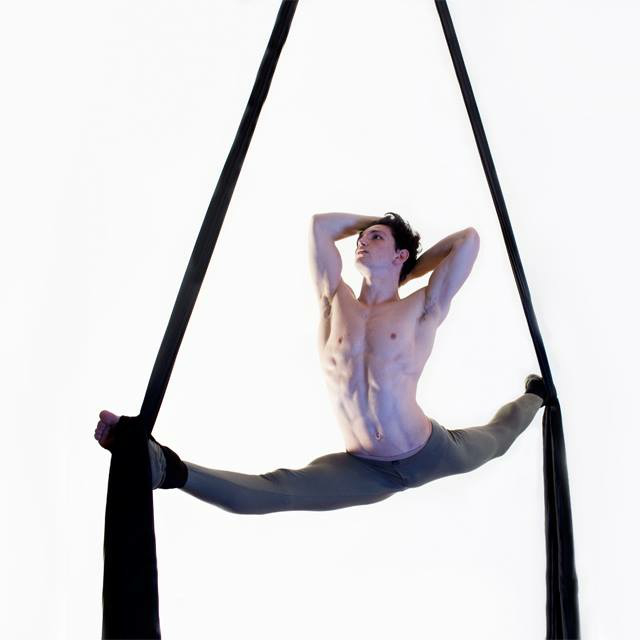
Photo: Max Torendell
2. What is your favorite apparatus and why? How often do you train and perform?
Aerial Fabric has got to take the cake for me. Not only does it hold space in my heart as my first apparatus, but silks also have a nearly endless variety of skills, sequences, and drops to discover and work on. Even now after working intensively with them for several years, there is always something new to learn! My training schedule during a regular week includes 4 days of aerial training, 3 days of weight-lifting, 2 days of dance class, and 6 days of stretching. At the moment, I perform irregularly at gigs and event, so I can perform a few times a month, or once every few months, depending on demand.
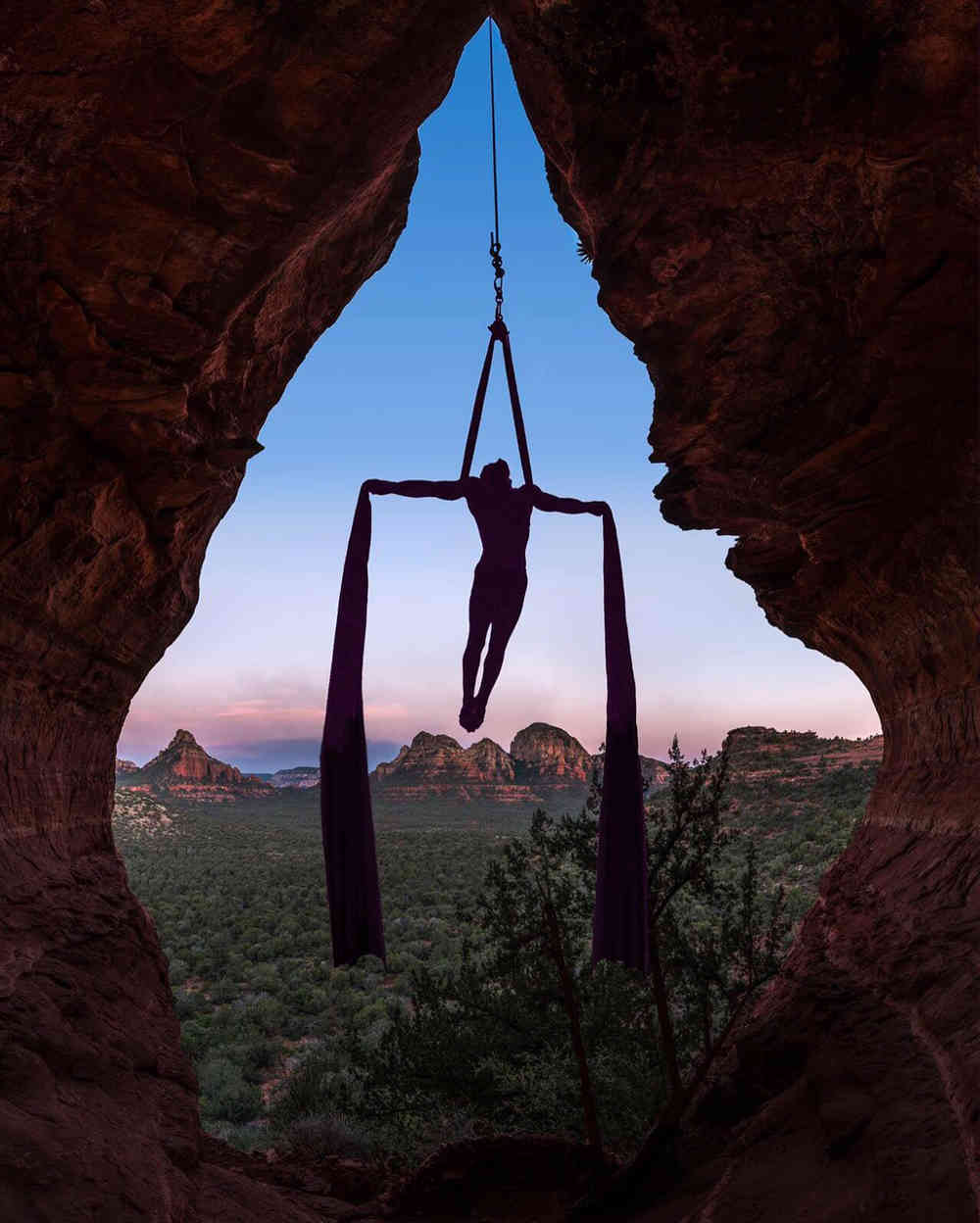
Photo: Charles Ruscher
3. What exercises would you recommend to get stronger for aerial straps? Could you suggest a routine for aerial arts students?
The most basic exercise that aerialists should master before beginning straps training is the shoulder-shrug. Shrugs are small movements that strengthen the tissues surrounding your scapula in your shoulders and upper-back. These should be performed with excellent technique while upright, inverted, as well as on a single-arm (they can also be done on the floor in a push-up position, or in a handstand). Inability to perform shrugs in each of these directions is a sign that the shoulder-girdle is not physically prepared for aerial straps work.
4. What exercises could one do at home daily without aerial apparatus as additional training?
There are many bodyweight exercises on can do at home to supplement aerial training. I’ll give you three of my favorites:
V-Ups: Lying on your back on the floor, assume a Hollow-Body position, then lift your upper and lower body together, with your butt as a pivot point, and compress your abs into your thighs for a moment, before lowering back down to your hollow-body. Easier version would be crunches. This exercise is vital for developing solid core strength, active hamstring flexibility and pike compression, as well as balance and self-awareness between the upper and lower body. Recommendation: 3 Sets x 20 Reps.
Push ups: Although push-ups are a nearly ubiquitous exercise, they are also extremely important, and shouldn’t be overlooked in one’s personal training. Pushups strengthen many of the muscles of the upper-body (which are so important for aerial work) include the Major and Minor Pectorals, the shoulders, triceps and biceps, back and scapula stabalizers, as well as the core. They can also be done in dozens of variations: by changing arm position (elbows perpendicular right angles, or close into the body) as a plank on hands or forearms, with hands or feet elevated on a block, slow-motion or explosive with hopping, etc.
Squats: As aerialists, we don’t think we really need to strengthen our lower-body as much because we are mostly using upper-body strength in the air; but working on leg strength is very important for balancing your split flexibility, as well as aesthetically balancing your physique. There is lots of information online about proper form for regular body-weight squats, but I would recommend also looking into single-leg squats as well, which work on many muscle groups (including glutes, piriformis, quads, hamstrings, calves, and plantar muscles) as well as equilibrium and balance.
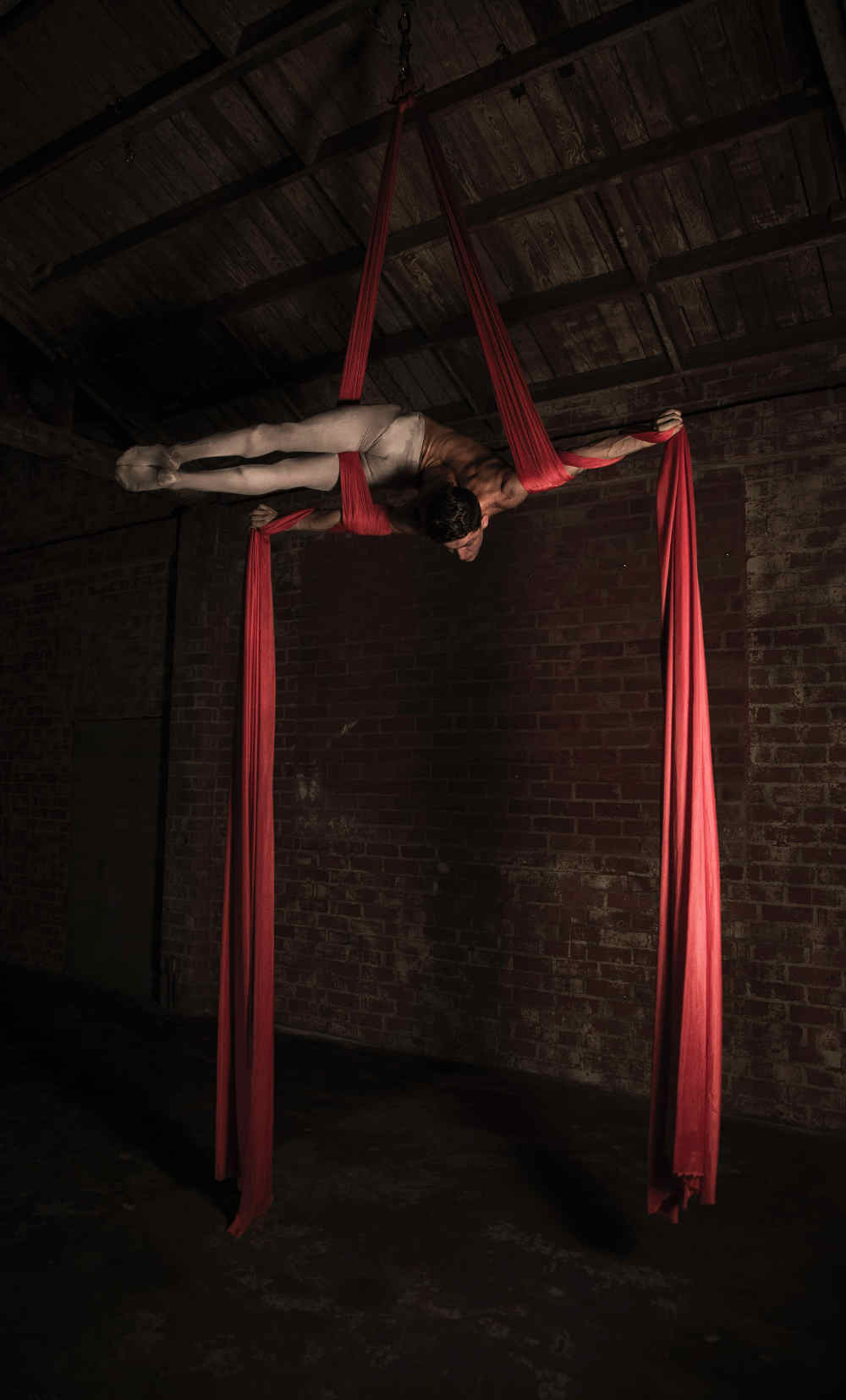
Photo: Anna Cicone
5. How was your experience at the US Aerial Championship? What would you recommend to those who would like to participate?
Competing in US Aerial was an amazing experience, both in 2015 and 2016. The first year, I went without knowing a single other person who was competing, and that was interesting because I got to kind of fly under the radar. But between the two Championships, my Instagram had grown from 3k followers to 25k, and by the time I went, I already knew almost all of the boys I was competing against, as well as many of the artists in the other divisions too! Because of that, it felt less like a competition, and more like a festival, where we were all trying to do our best, and routing each other on because we were already friends!
If you have interest in participating in a festival or competition, make sure you stay on top of deadlines! You can have the most beautiful act in the world, but if you miss the date by which you need to send in your submission video, or fill out your participation form, you may be out of luck. Doing these things in a timely manner can also give you a better chance of getting into a competition, as well as save you money on fees. On the performance side, remember that most competitions weigh your story, character, and emotion equally against more traditional elements of strength and technique, so if you can make them both equally strong, you will impress the judges, and stand out from your competitors. Don’t let the results be your main focus, however. Go to a competition with humility and optimism, giving the best performance you can, as well as rooting for the other aerialists, are you will always come out a winner!
Photo: Cristian Buitron, US Aerial Championship
6. Could you give some tips and exercises aerial silks duo?
What is important to consider for both flyer and catcher? What are the common mistakes?
Like all aerial arts, the most important aspect of duo work is safety. But this takes on a whole knew level when you are working with another person. On the surface level, this includes having the right kind and amount of mats, working at a height that is appropriate for your level, and when doing more advanced tricks (like release moves) considering training in a space with a foam pit. On a more personal level, communication is essential so that both partners are on the same page, and so that they can eliminate as many surprises as possible. This also mean being honest if something doesn’t feel quite right, and being able to give ear when your partner has suggestions for what would make things easier on their end.
For the base, you’re main goal (at least initially) is going to be conditioning, both to make sure that you can lift your flier safely for a good length of time, as well as getting your body prepped to endure the specific pressure of the apparatus in the position you choose to base in (like your lower back and inner thighs for a cross-back-straddle, or your quads in catcher’s position on a trapeze). And while the positions I just mentioned are the most common, don’t be afraid to change it up, and get creative with your basing positions. This will make things more interesting for you, as well as the audience.
As for the flyer, you can make things a lot easier for your base by keeping your core engaged, and learning to hold your own bodyweight in the air. It may seem to you that your weight doesn’t change from moment to moment, but how you hold your body actually has a huge effect on how heavy you feel to your base.
Additionally, you have got to be the one to let your base know if anything does not feel right. Having trust that your partner will keep you safe is extremely important, but on the other hand, YOU are (most likely) the person most in danger of an accident, so be sure to respect both your body and your instincts, and communicate these things to your base.
7. Could you share some advanced trick for aerial silks solo or duo? Do you have a video of it?
If students would like to learn aerial technique from me, I have regular classes at Trapeze Las Vegas: The Studio, and am available for privates and workshops wherever I happen to be traveling to.
8. Could you please share a short warm-up before performing?
When warming up, my advice is to be continually moving. This can come in the form of light cardio (jogging in place, jumping jacks) bodyweight exercises (as I described earlier) and Dynamic stretching. I would recommend avoiding static stretches as much as possible until you are ready to cool down (though some are appropriate to prepare your body to be flexible in the air).
9. Do you have some funny episode during your performance or training to share?
Around Christmas, I was recording some training to post on my instagram, and I got a little carried away with my spinning, and my fabric tail ended up knocking a bunch of stuff off a cabinet in the space. Oops!!
10. Where one can book you for a show or visit your classes and workshops?
To schedule classes, workshops, privates, or performances, I can be emailed at brandonscottacrobat@gmail.com
Featured photo: Daniel Woods, Inspire Media

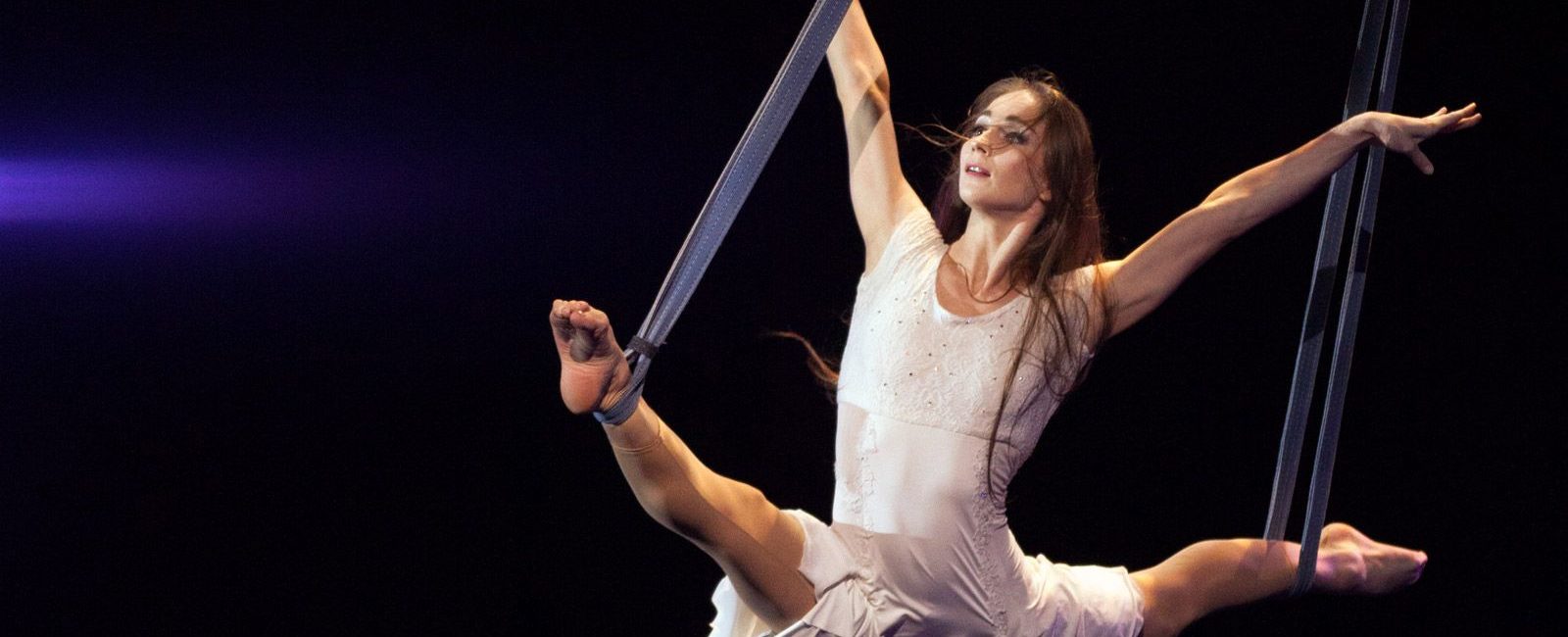
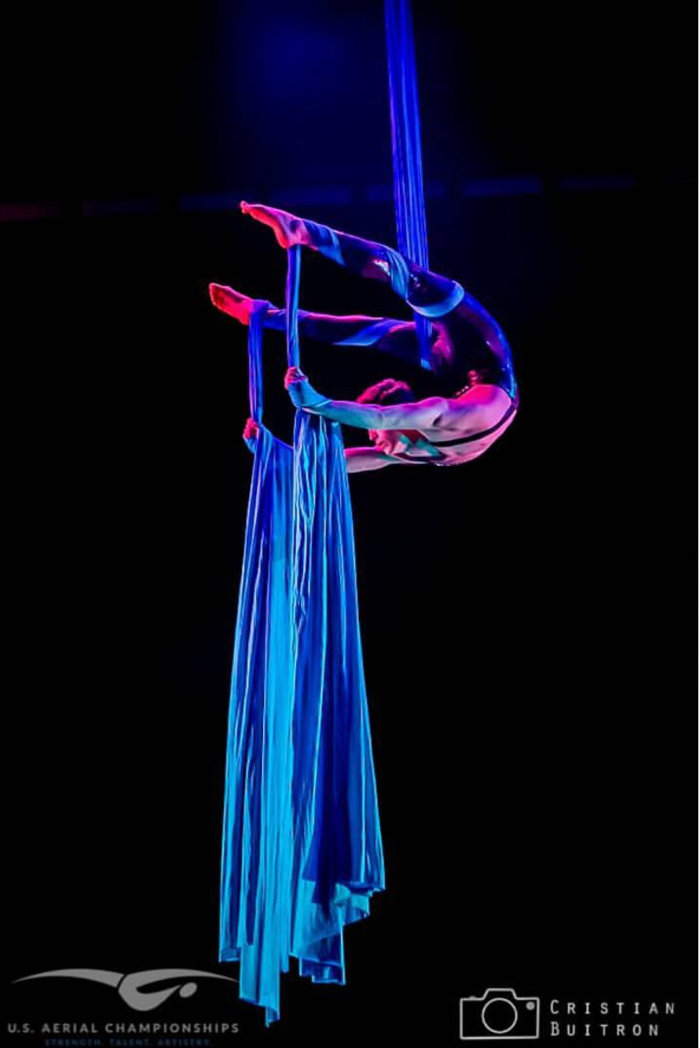
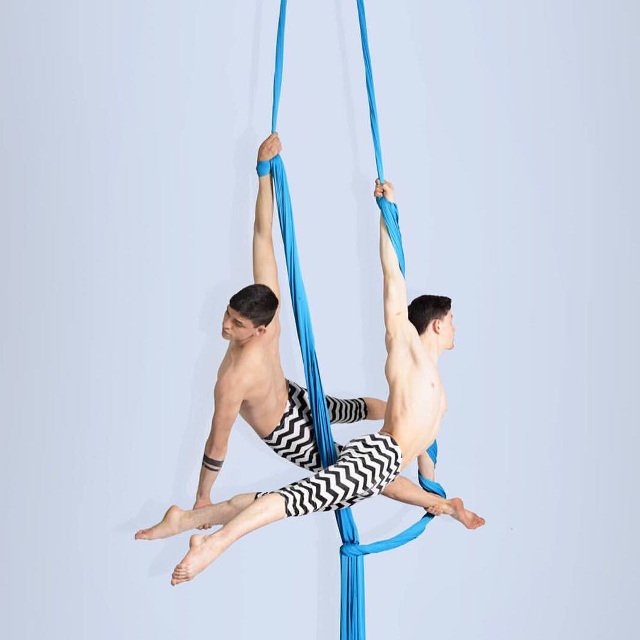
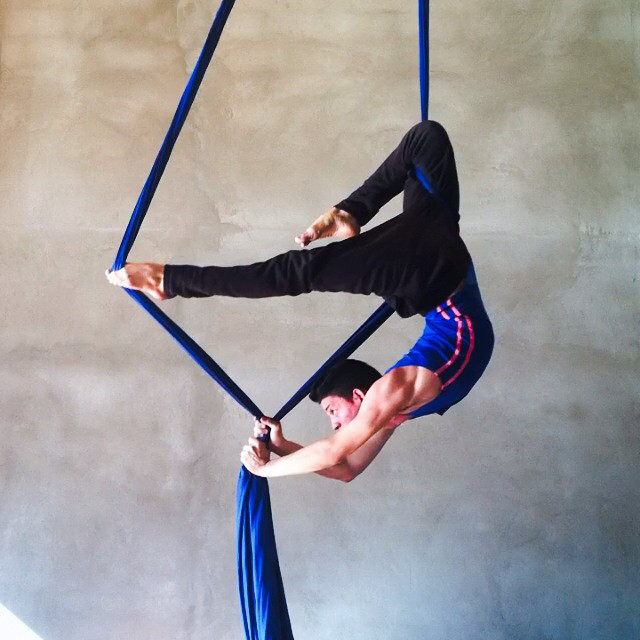
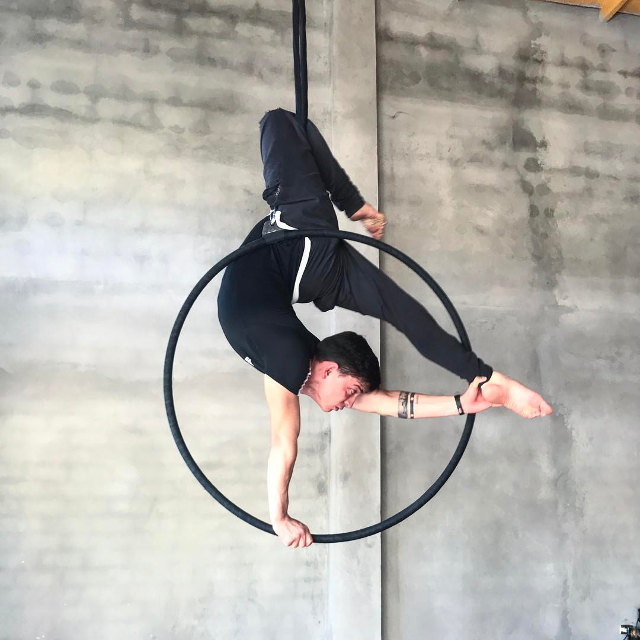
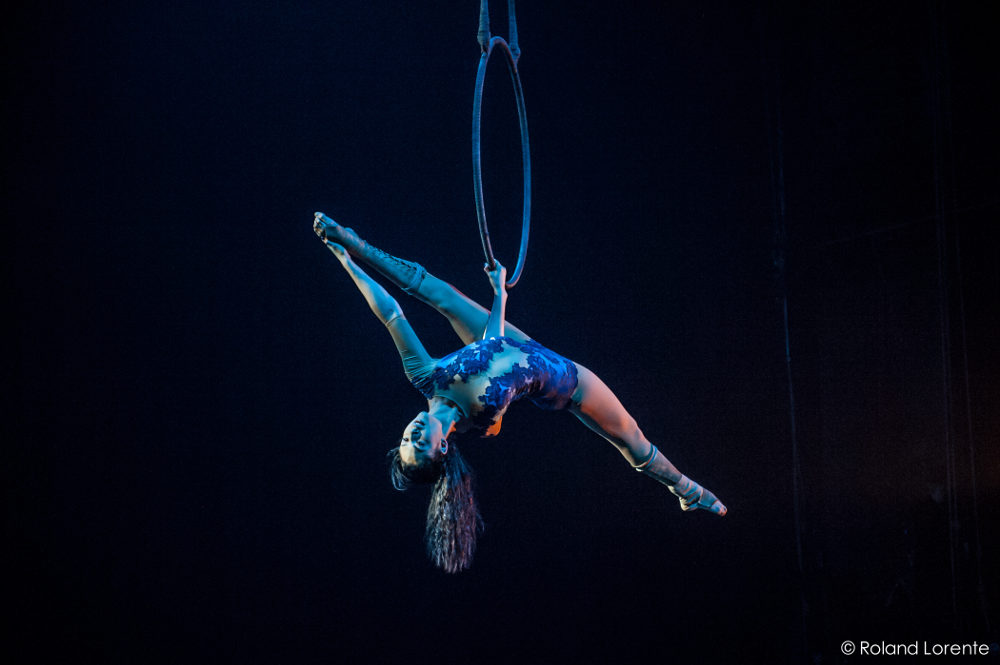
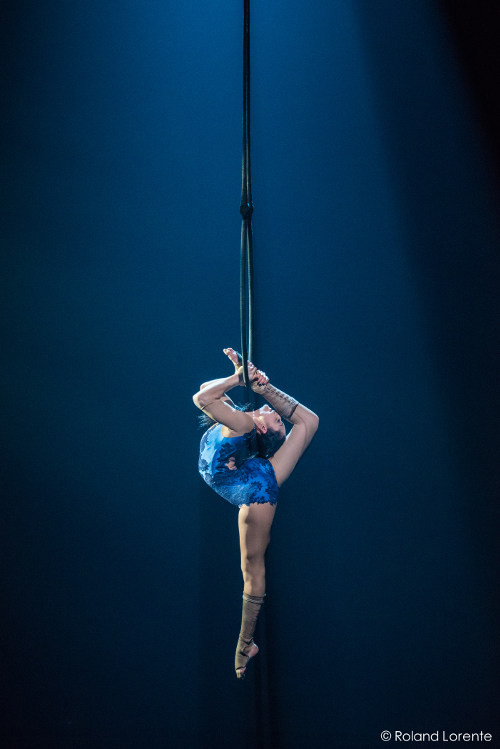
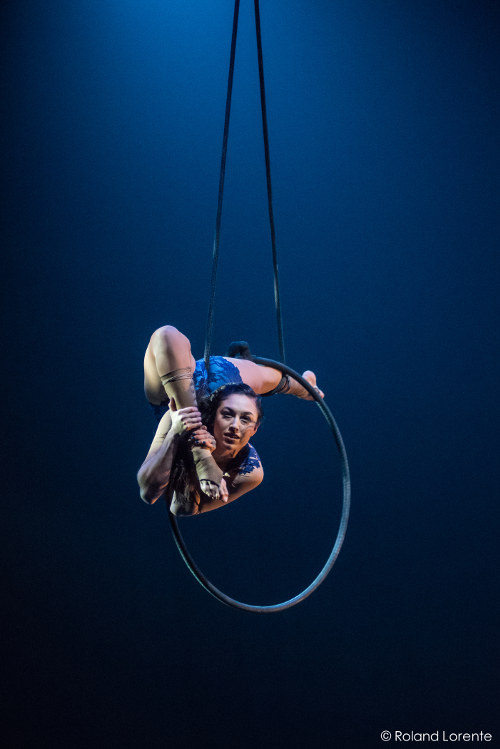
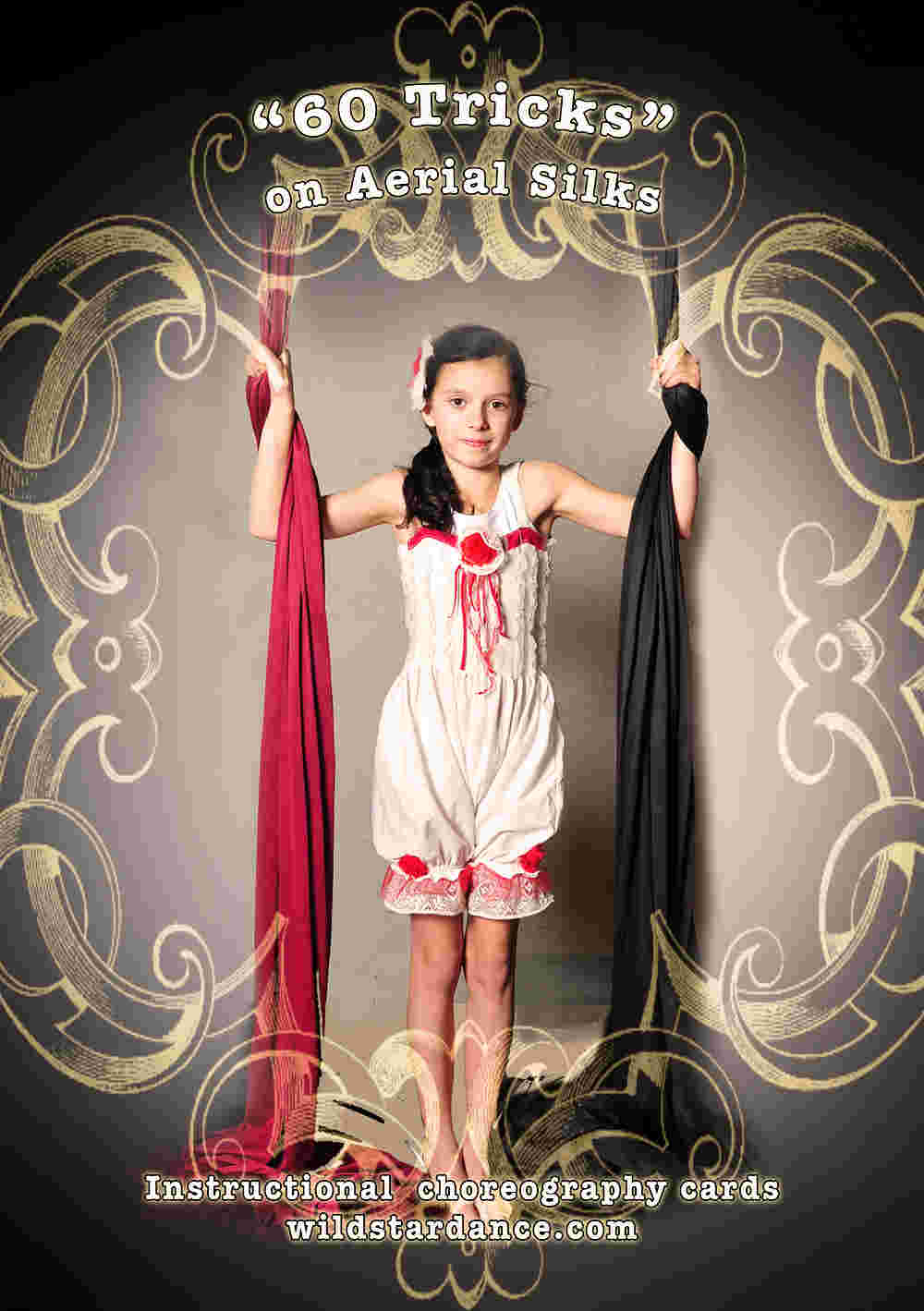
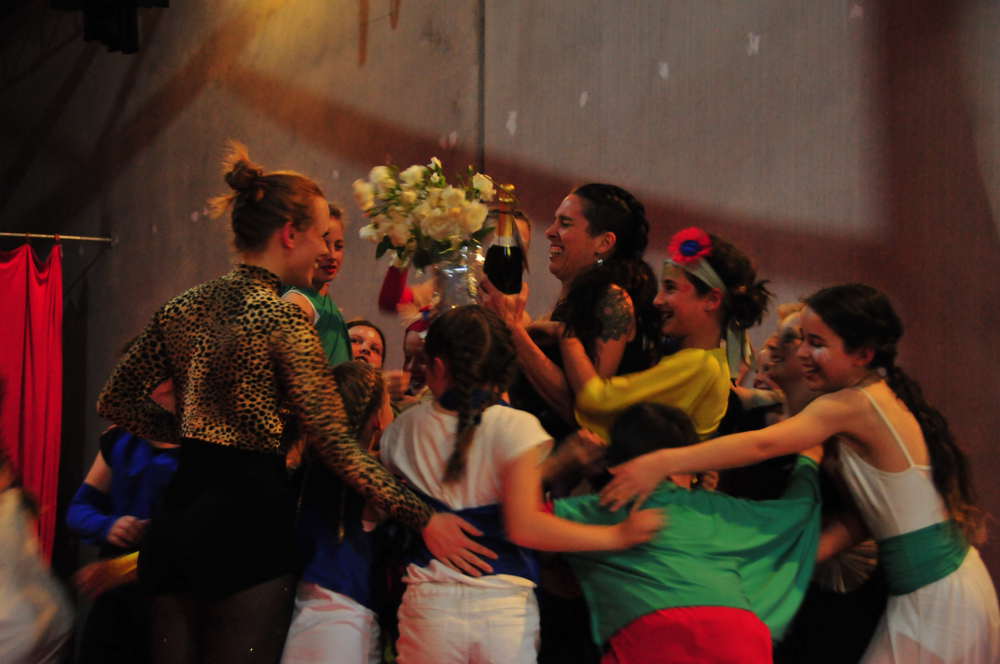
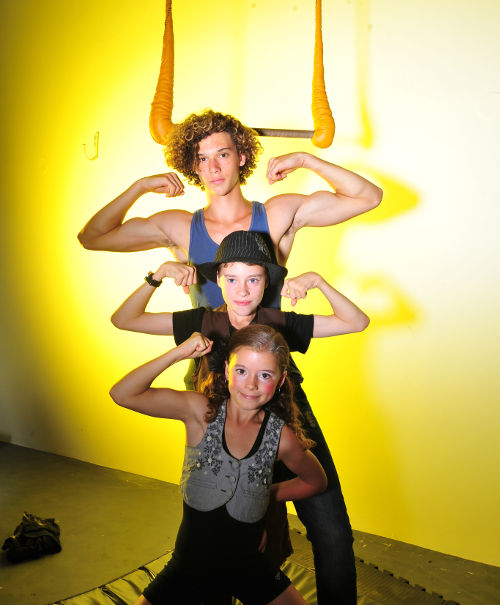
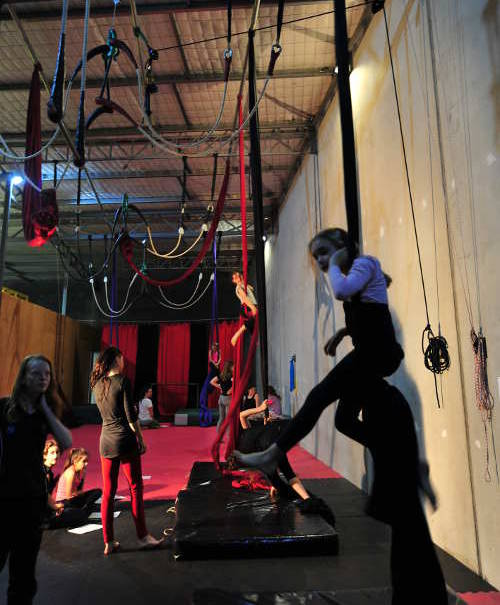
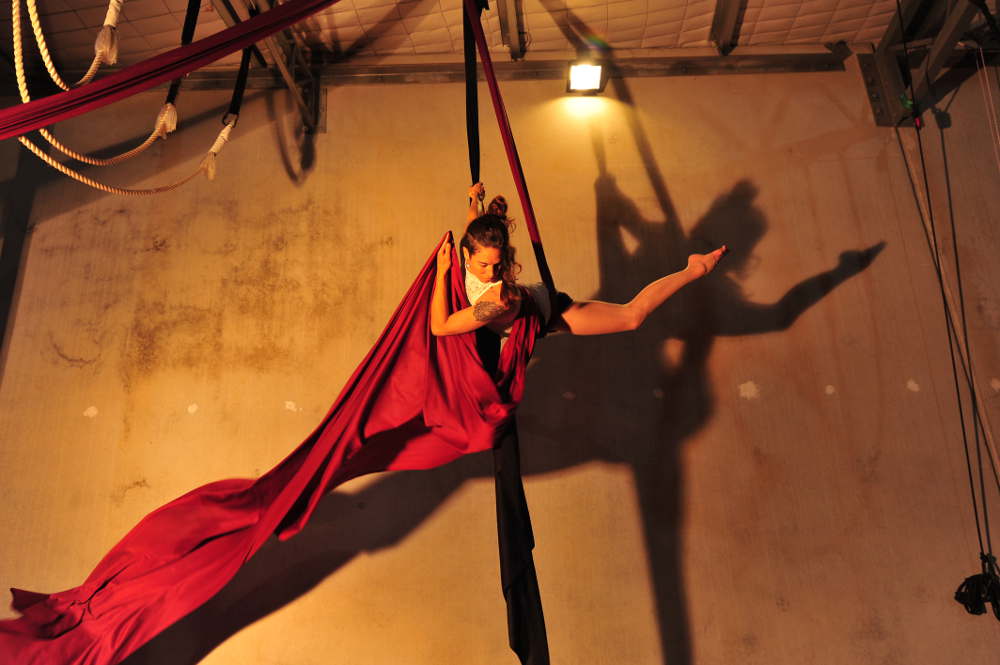
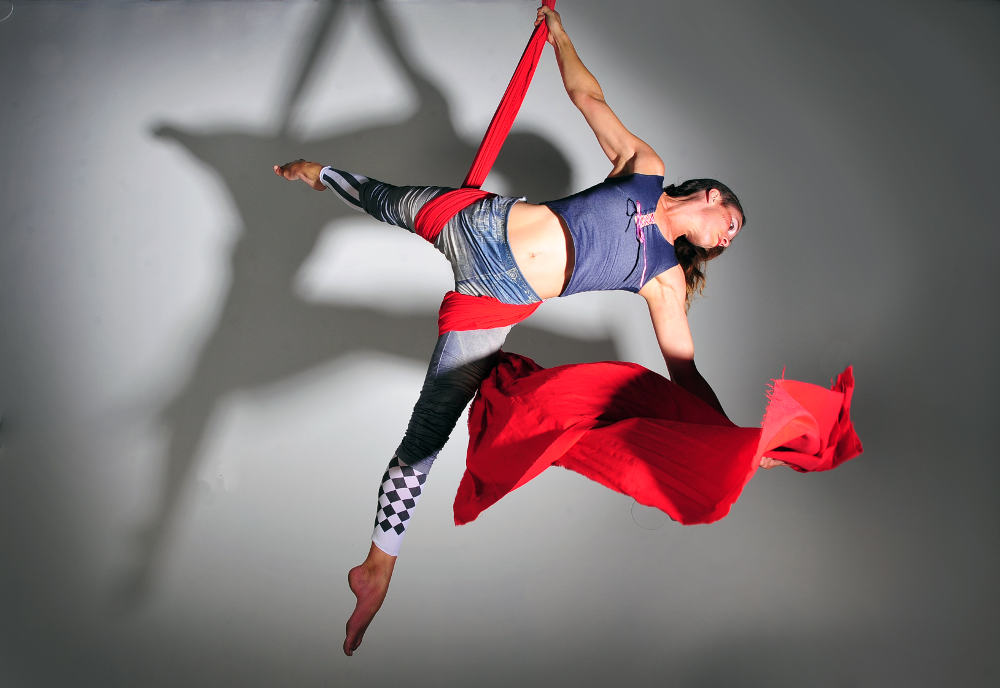
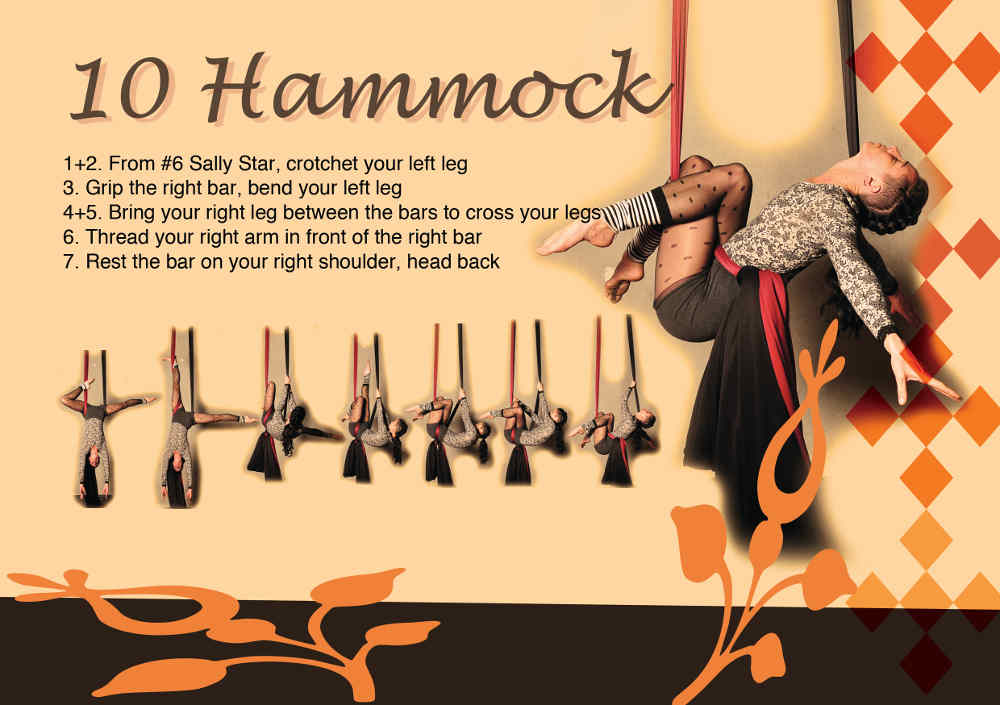
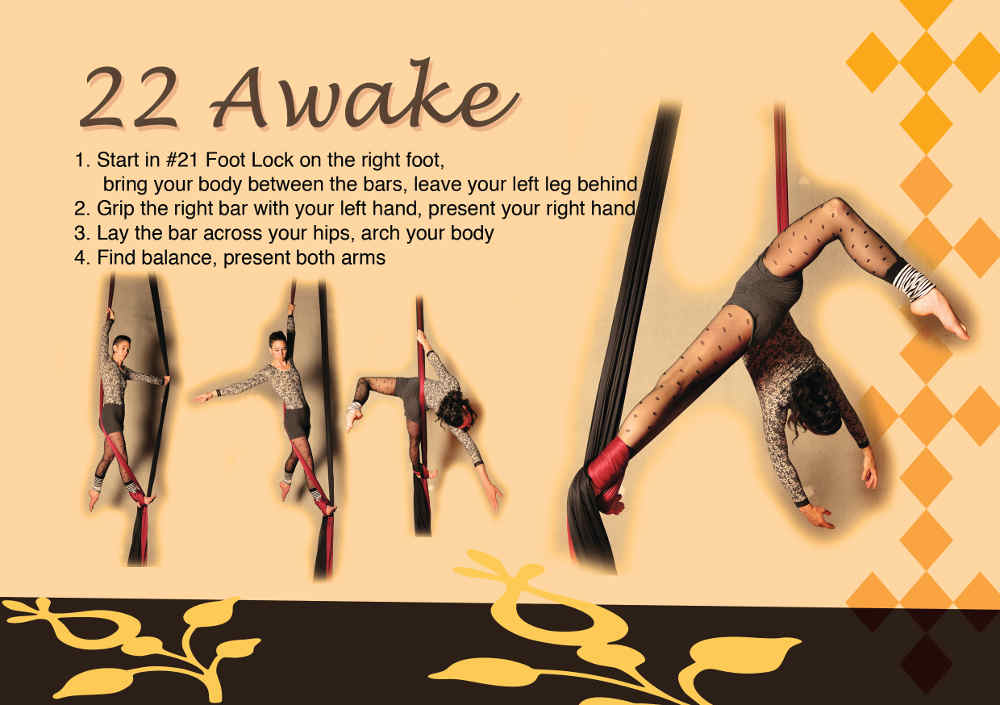
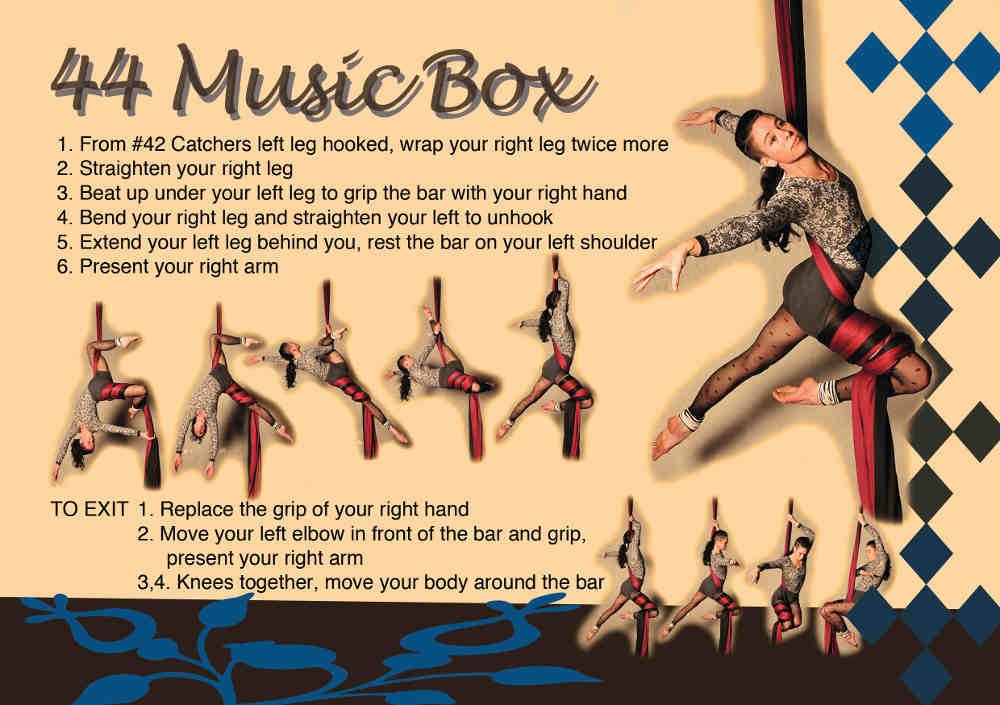
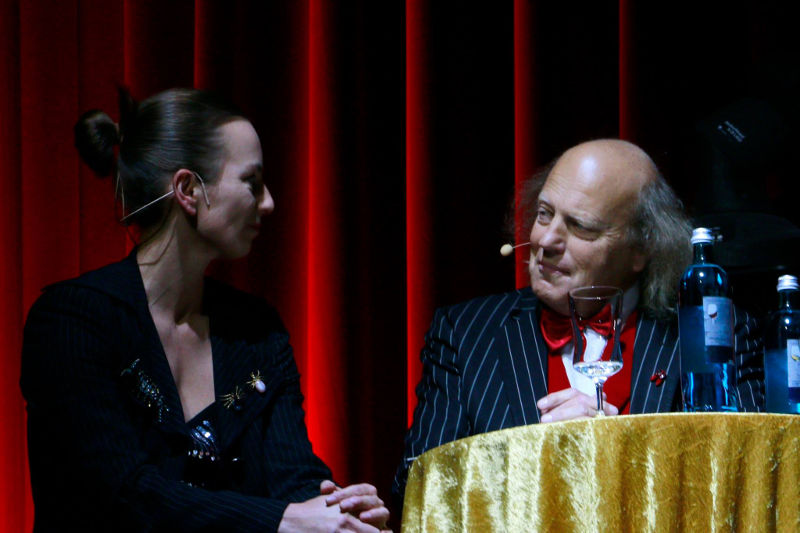
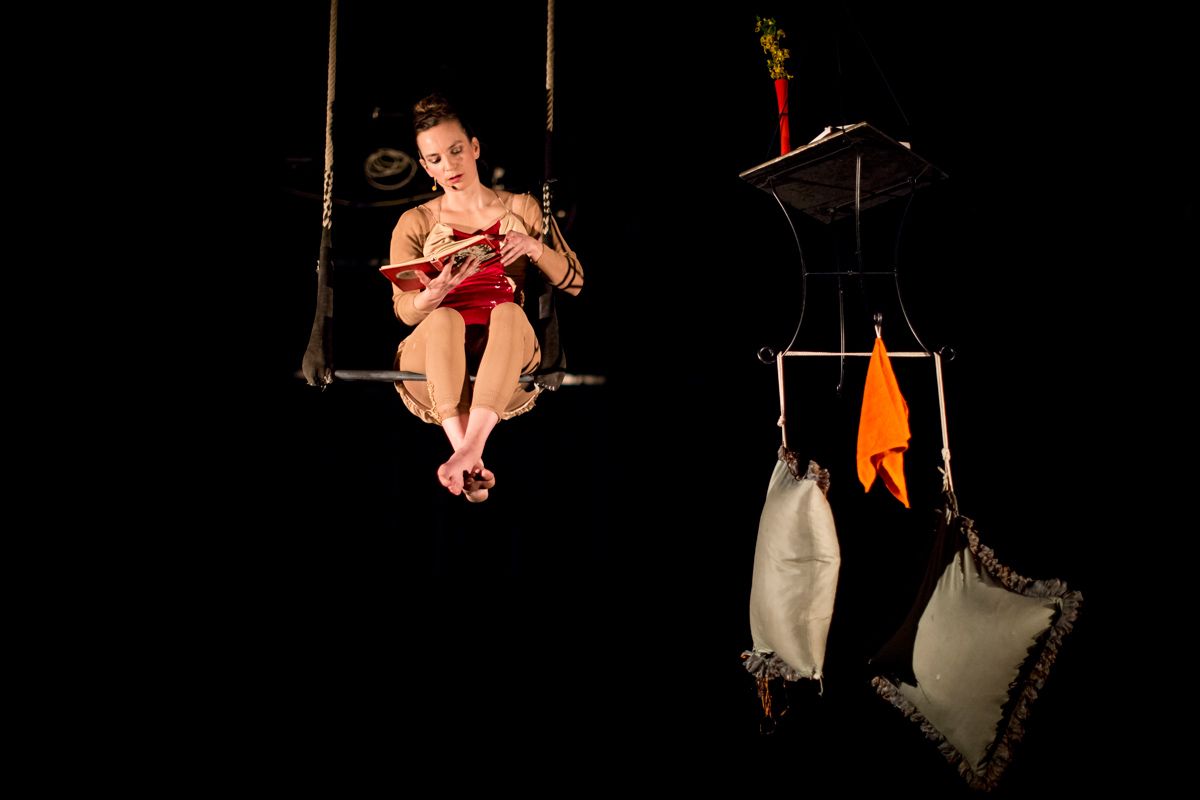
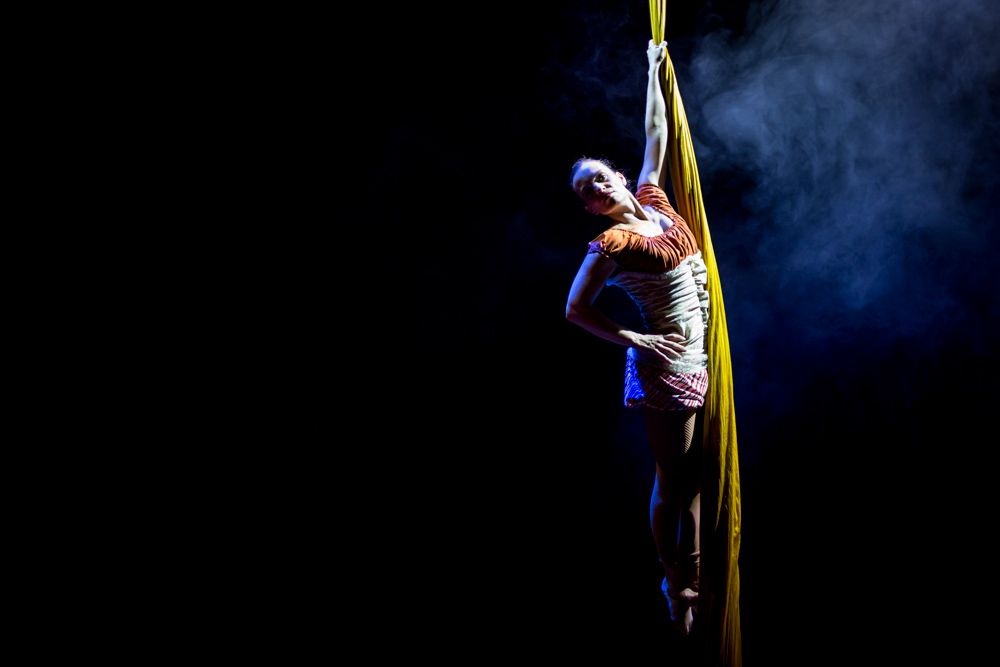
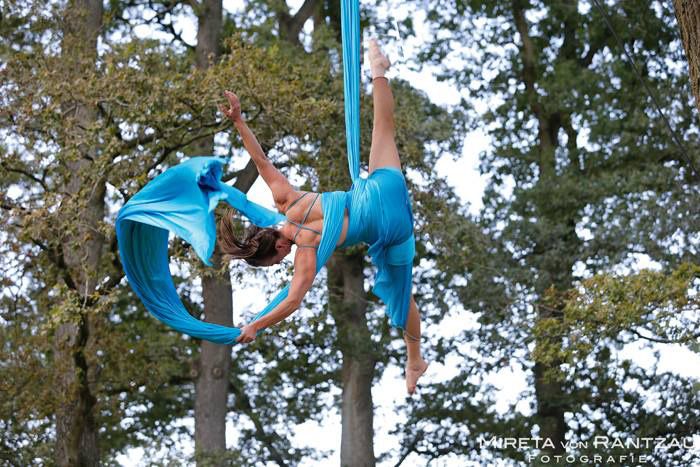
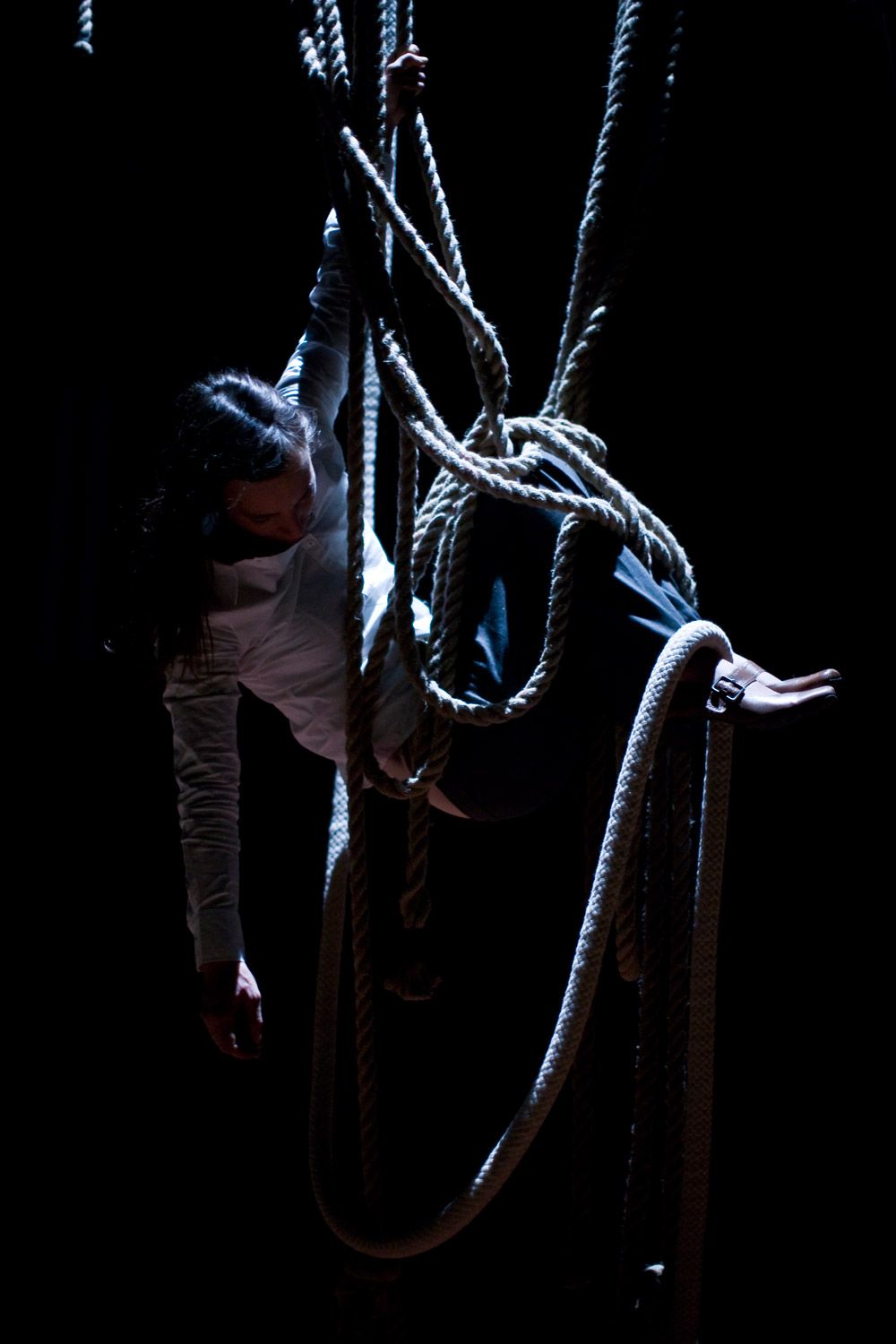
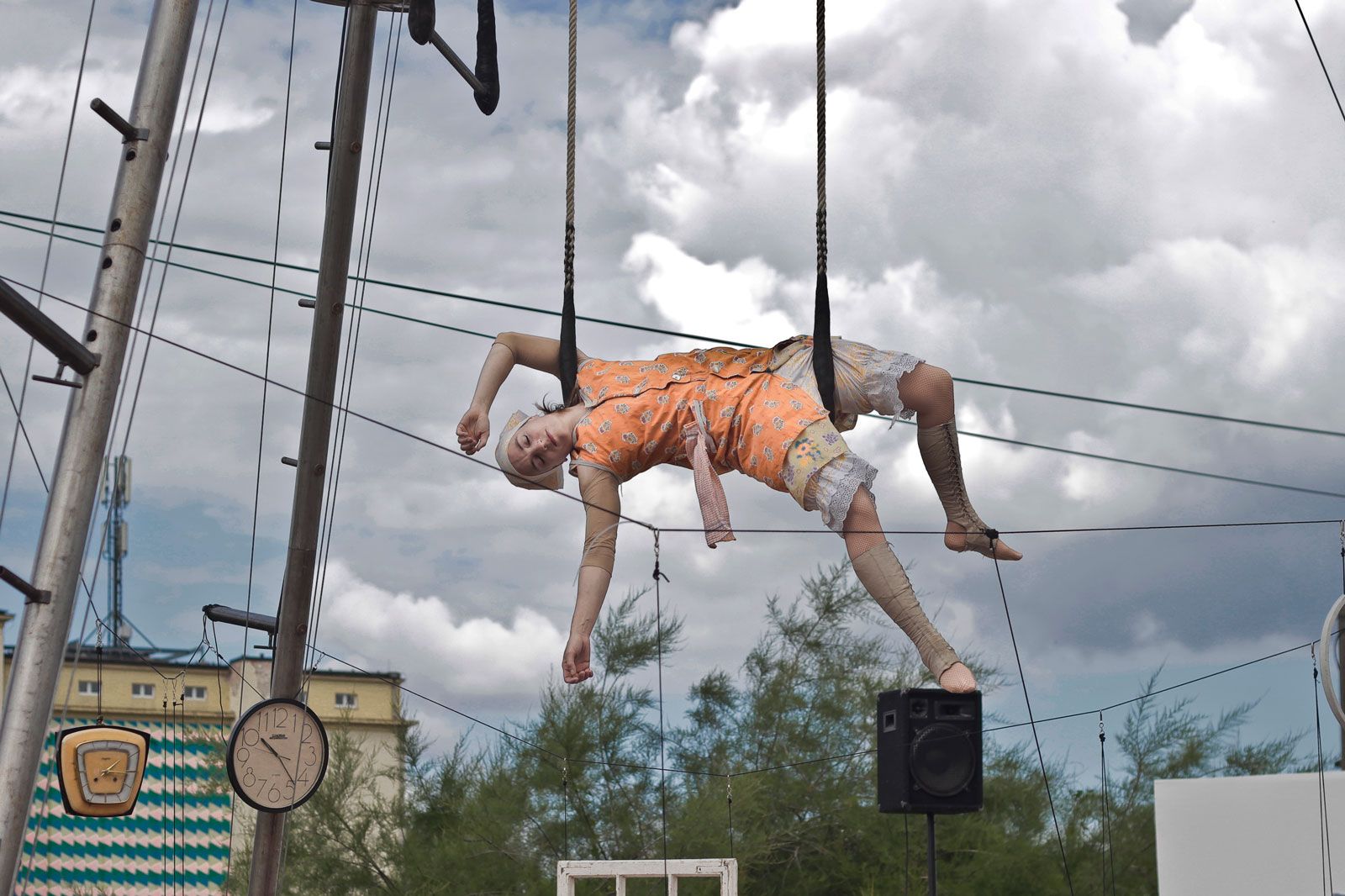
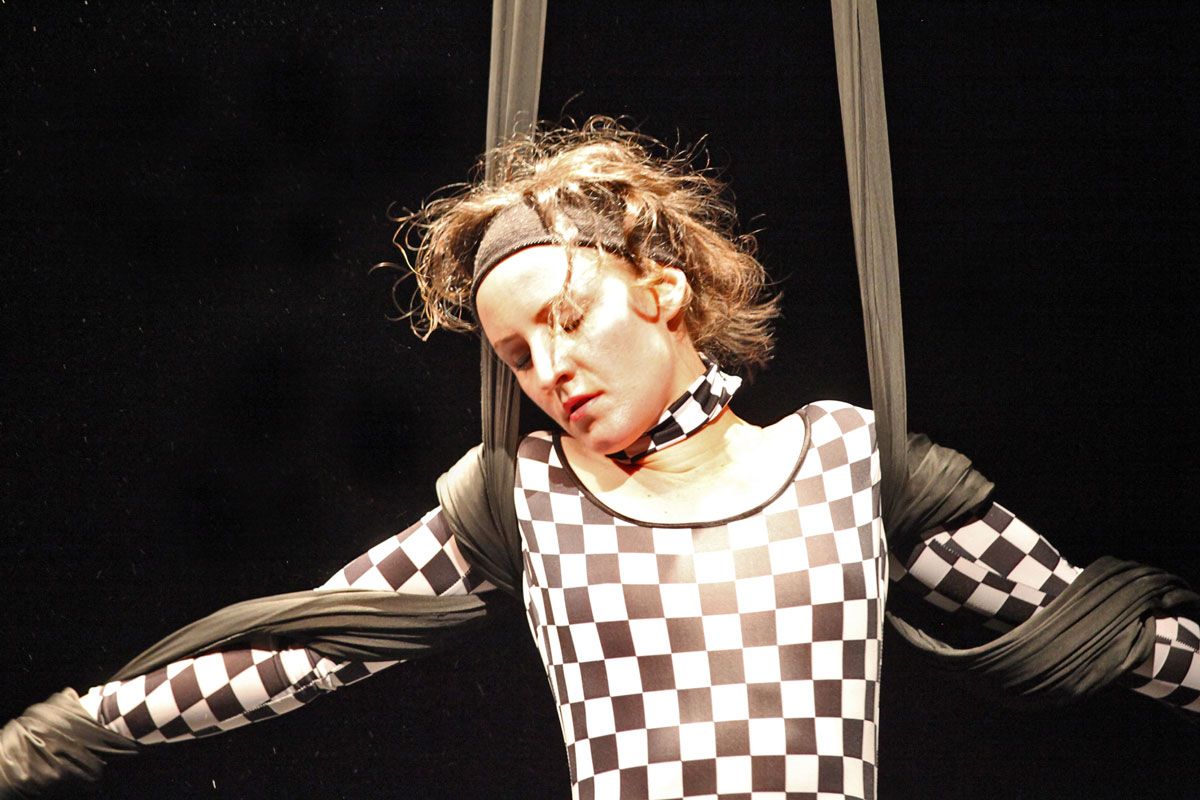
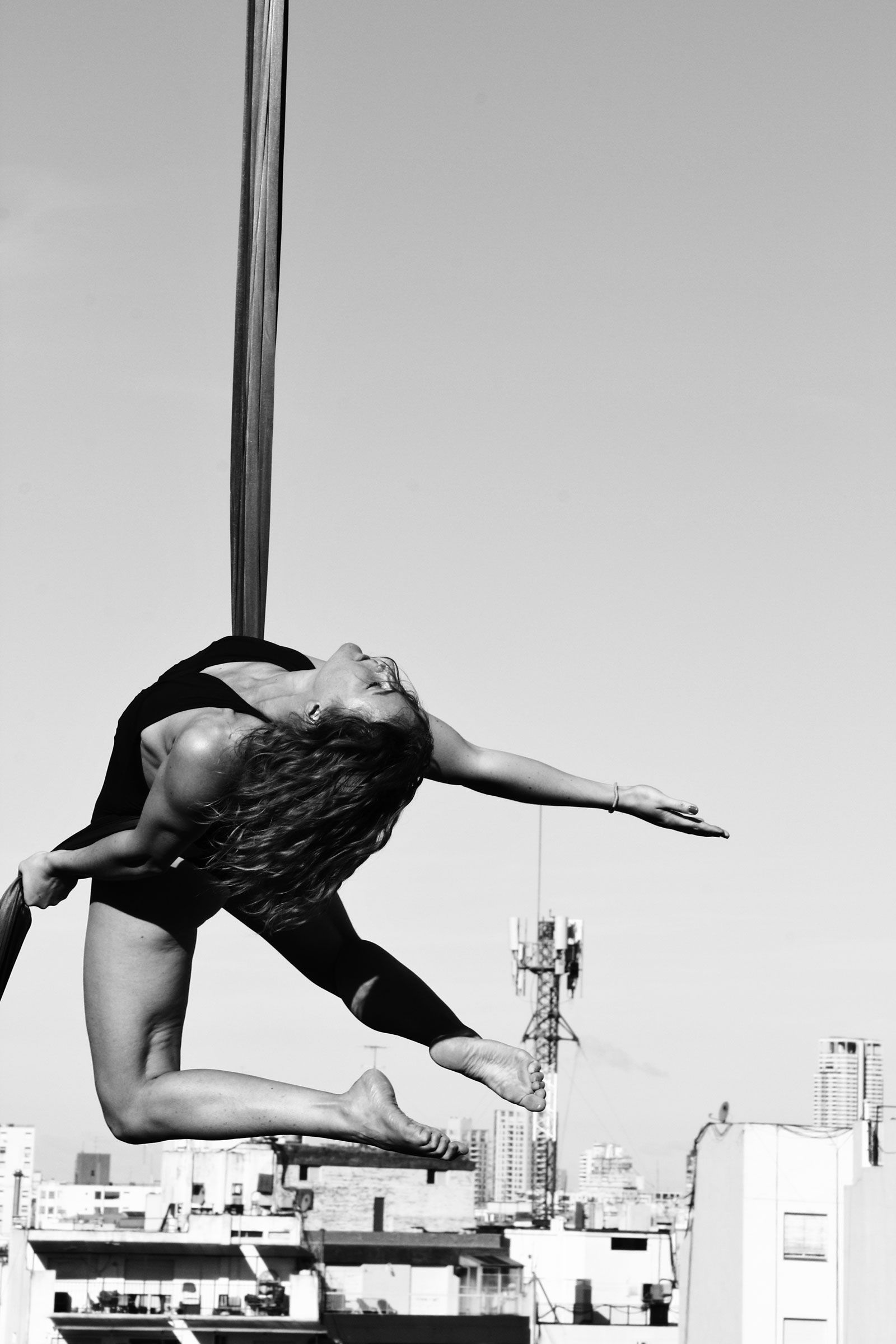
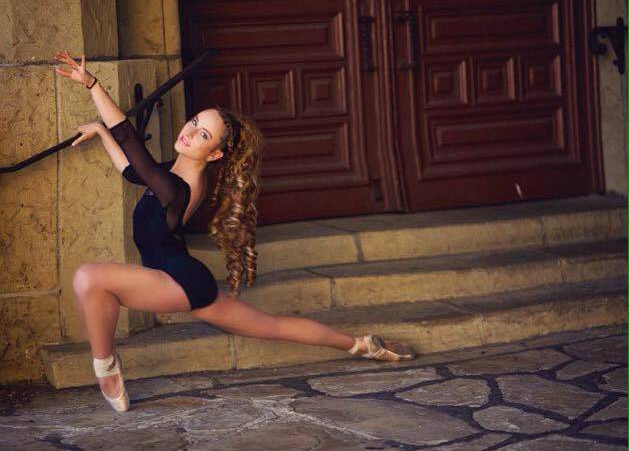
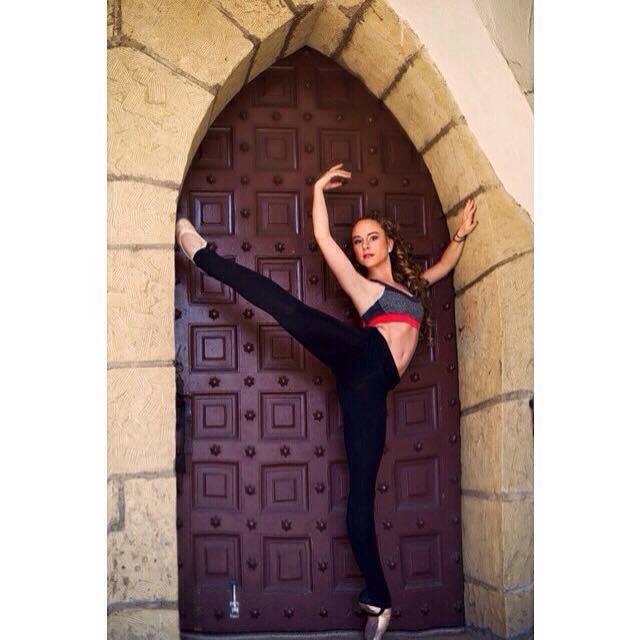
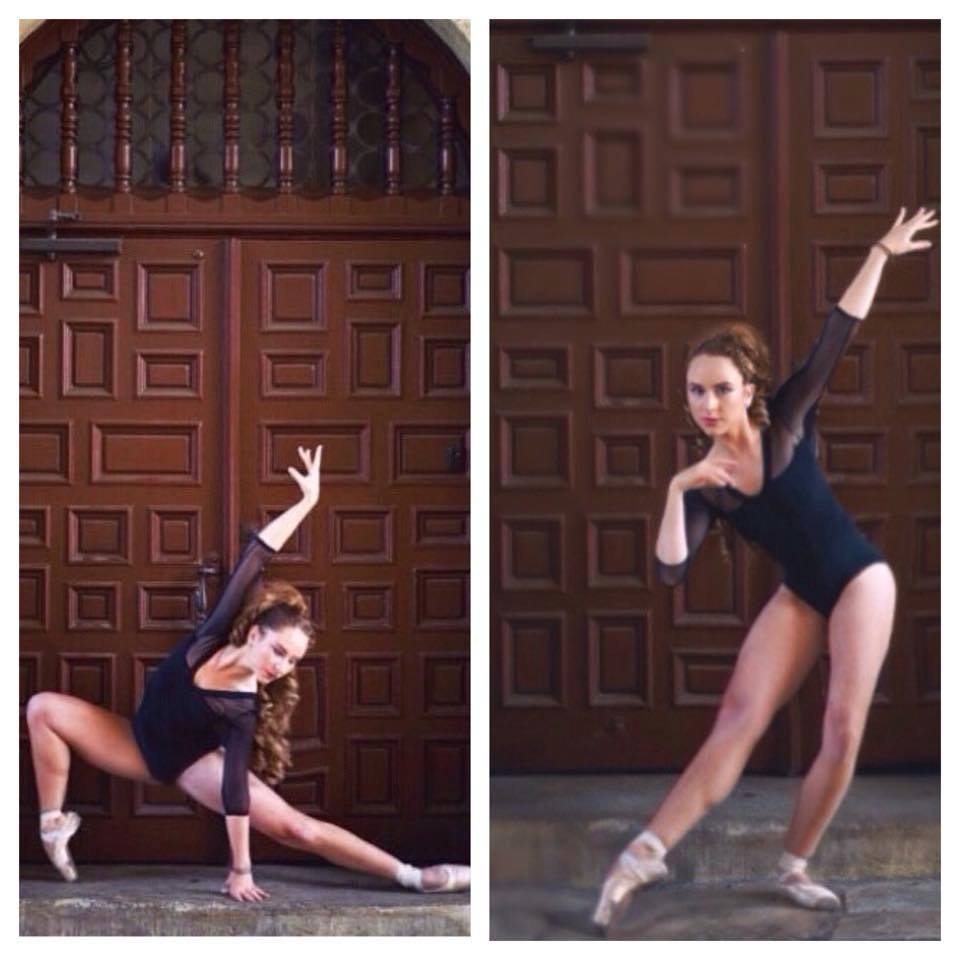
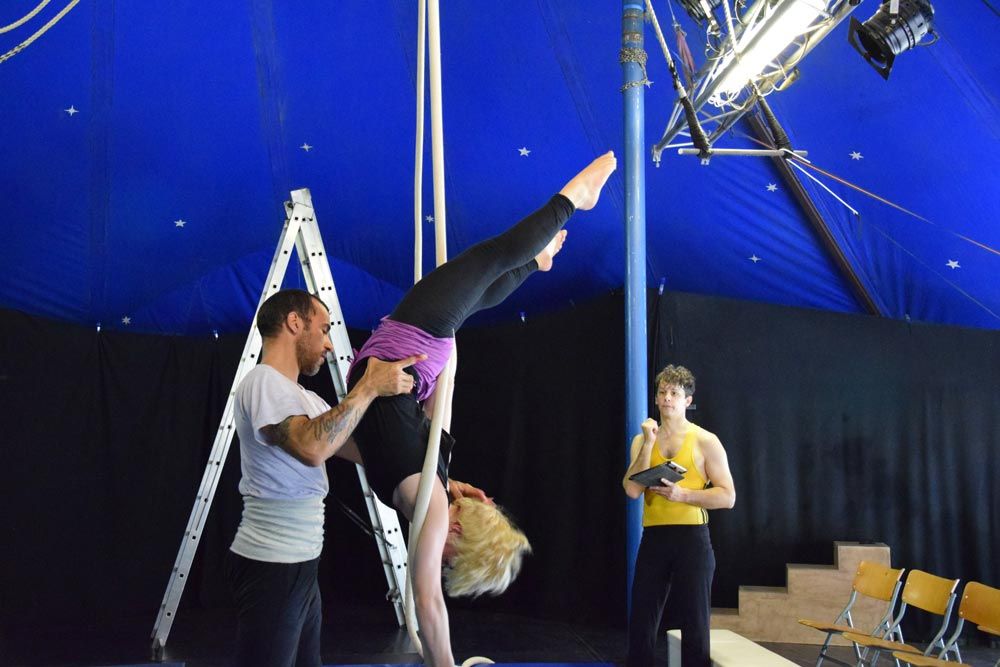
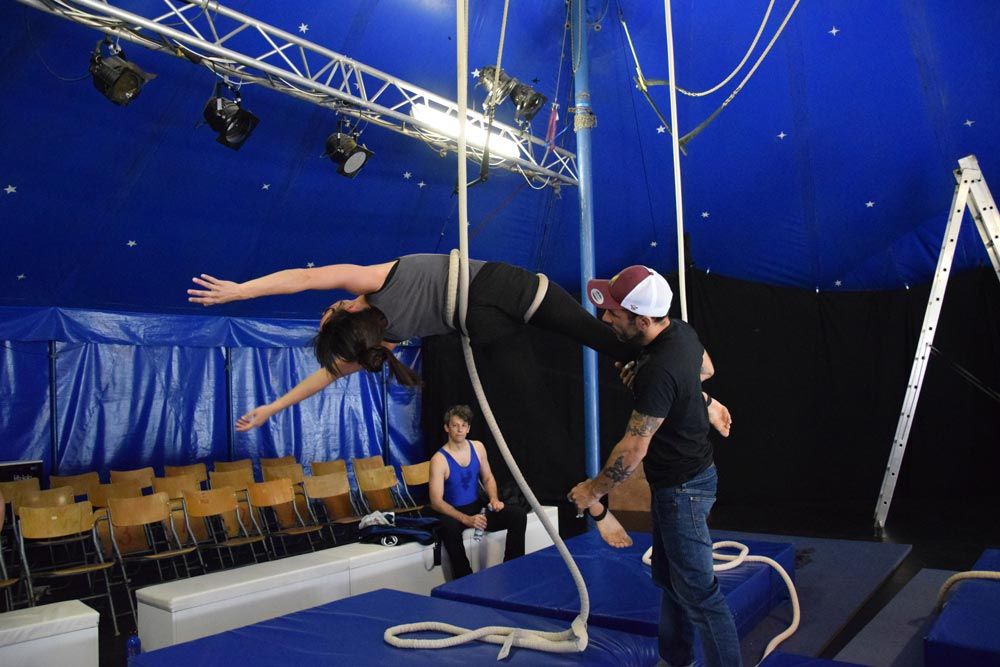
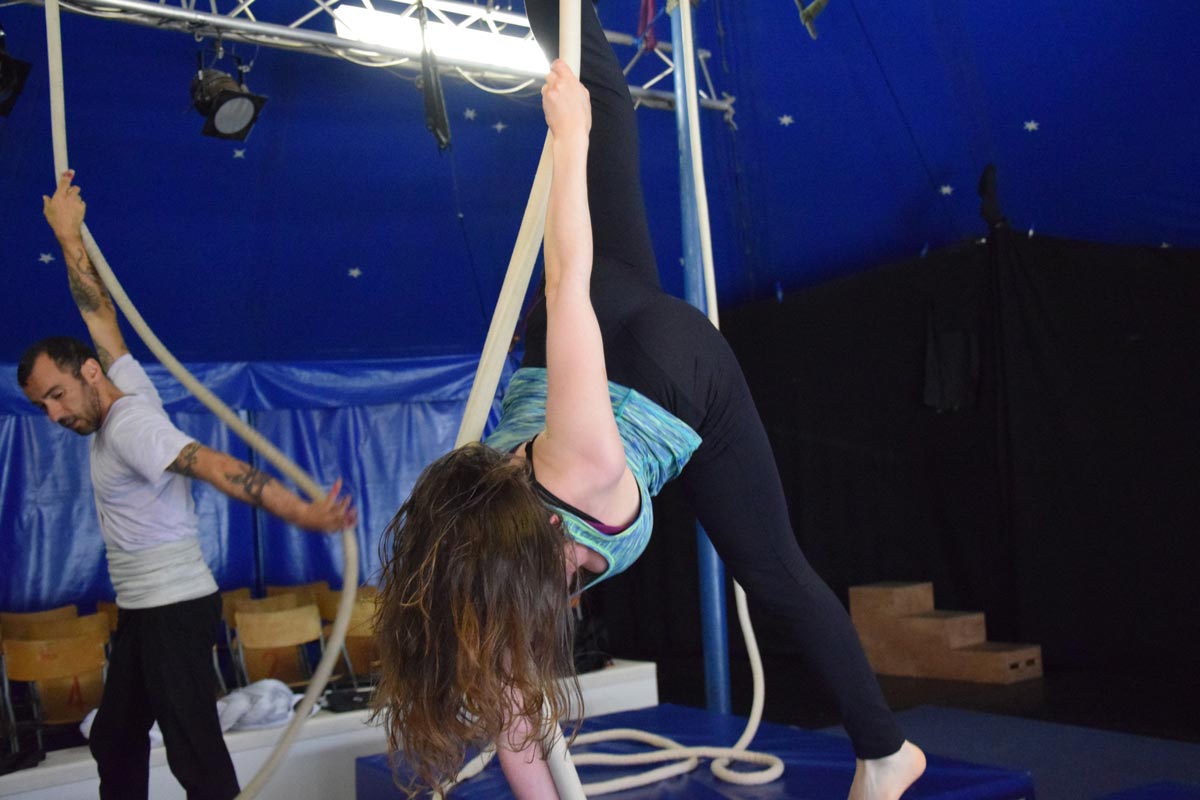
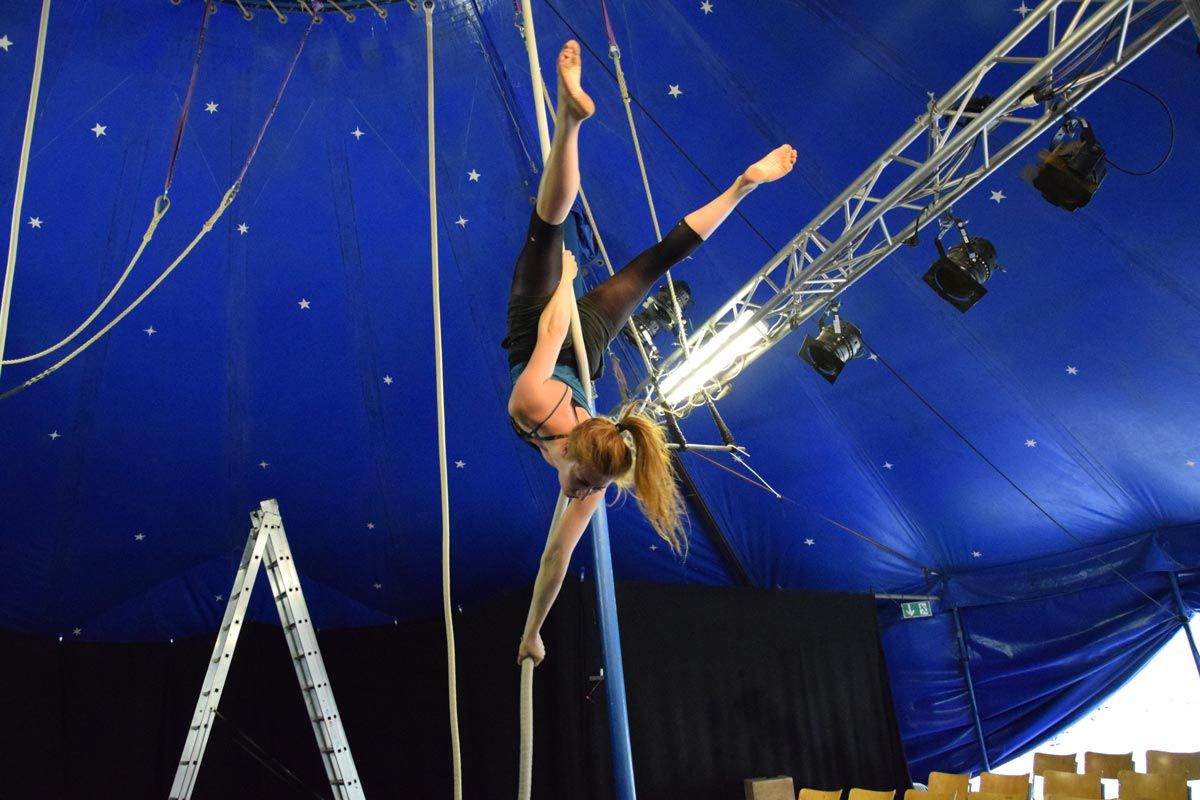
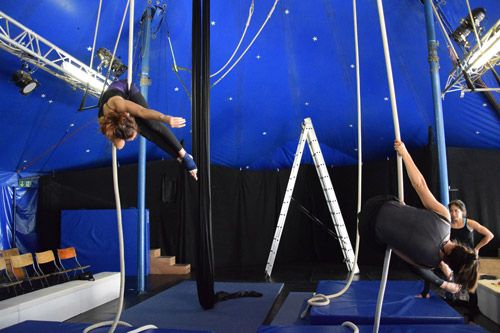

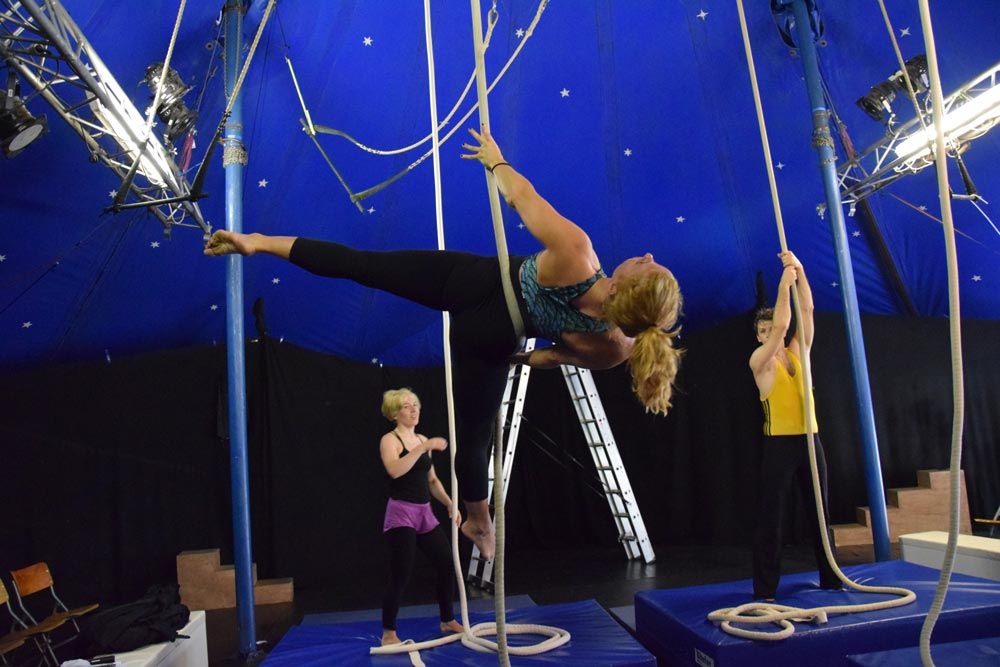
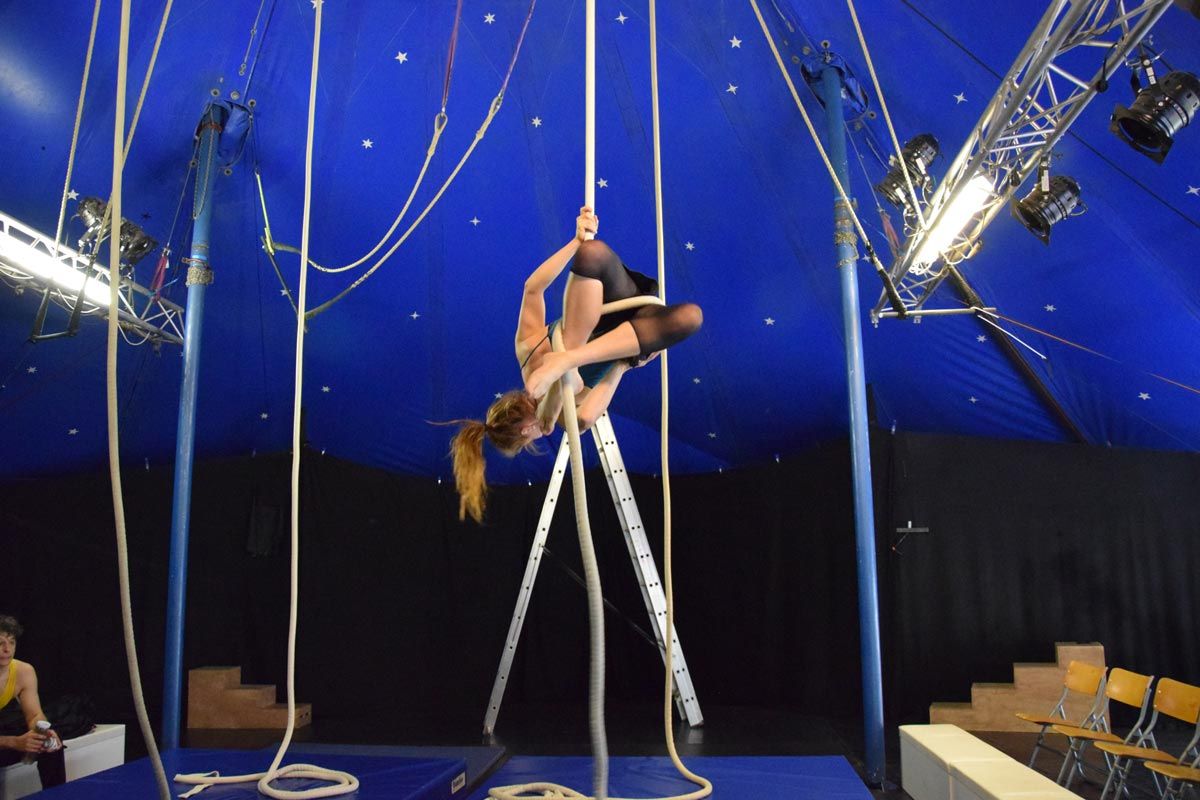

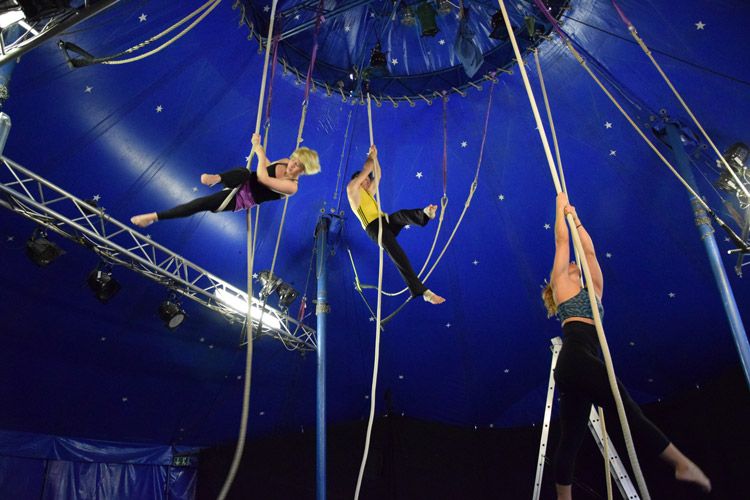
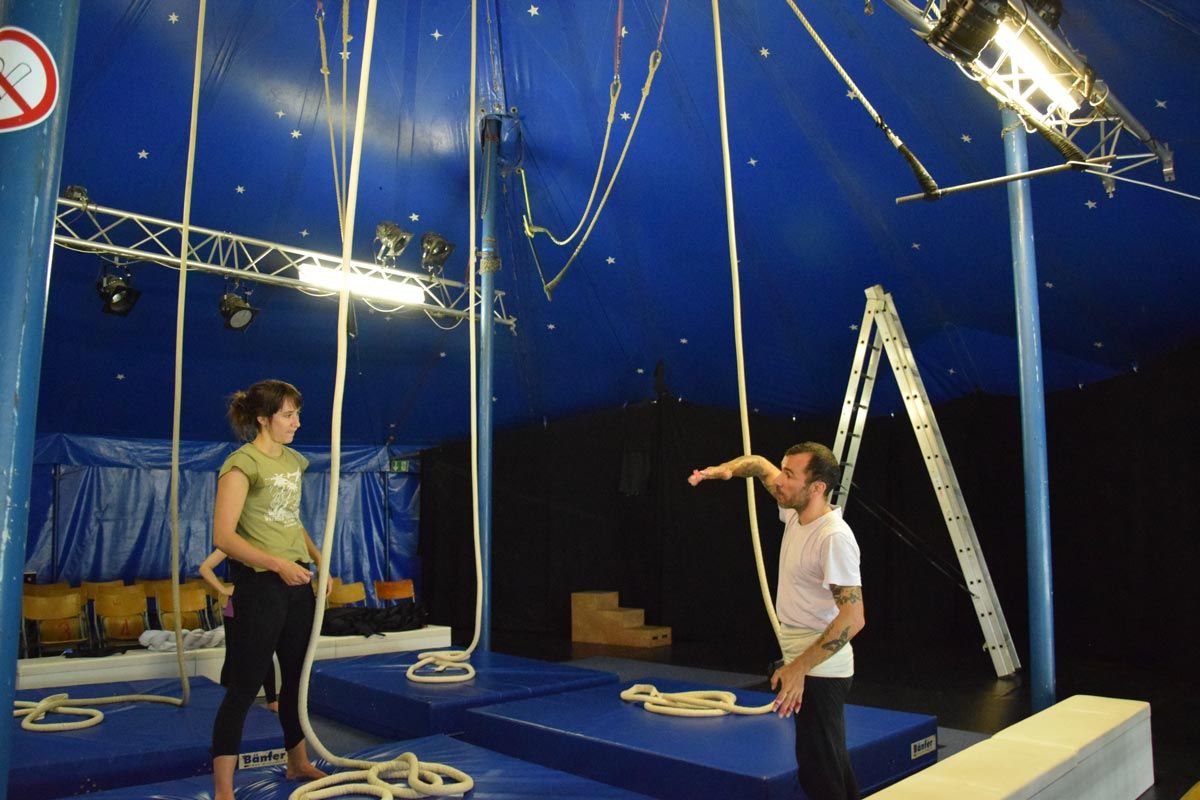
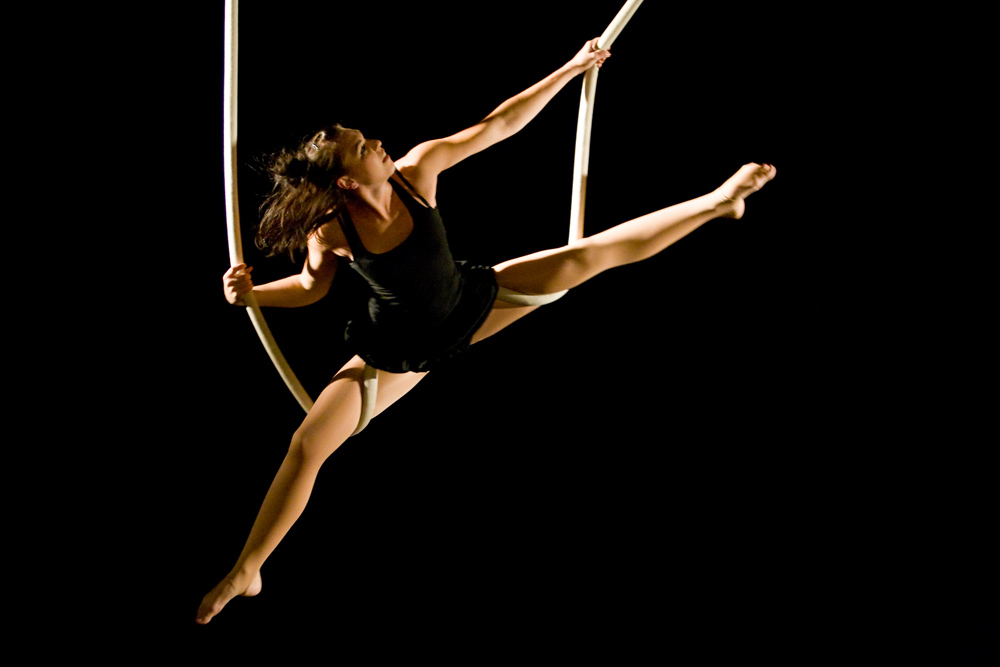
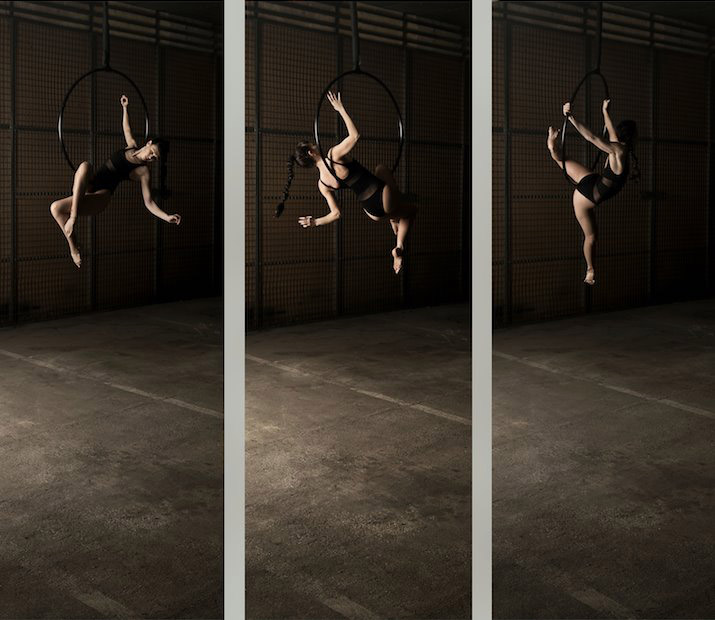
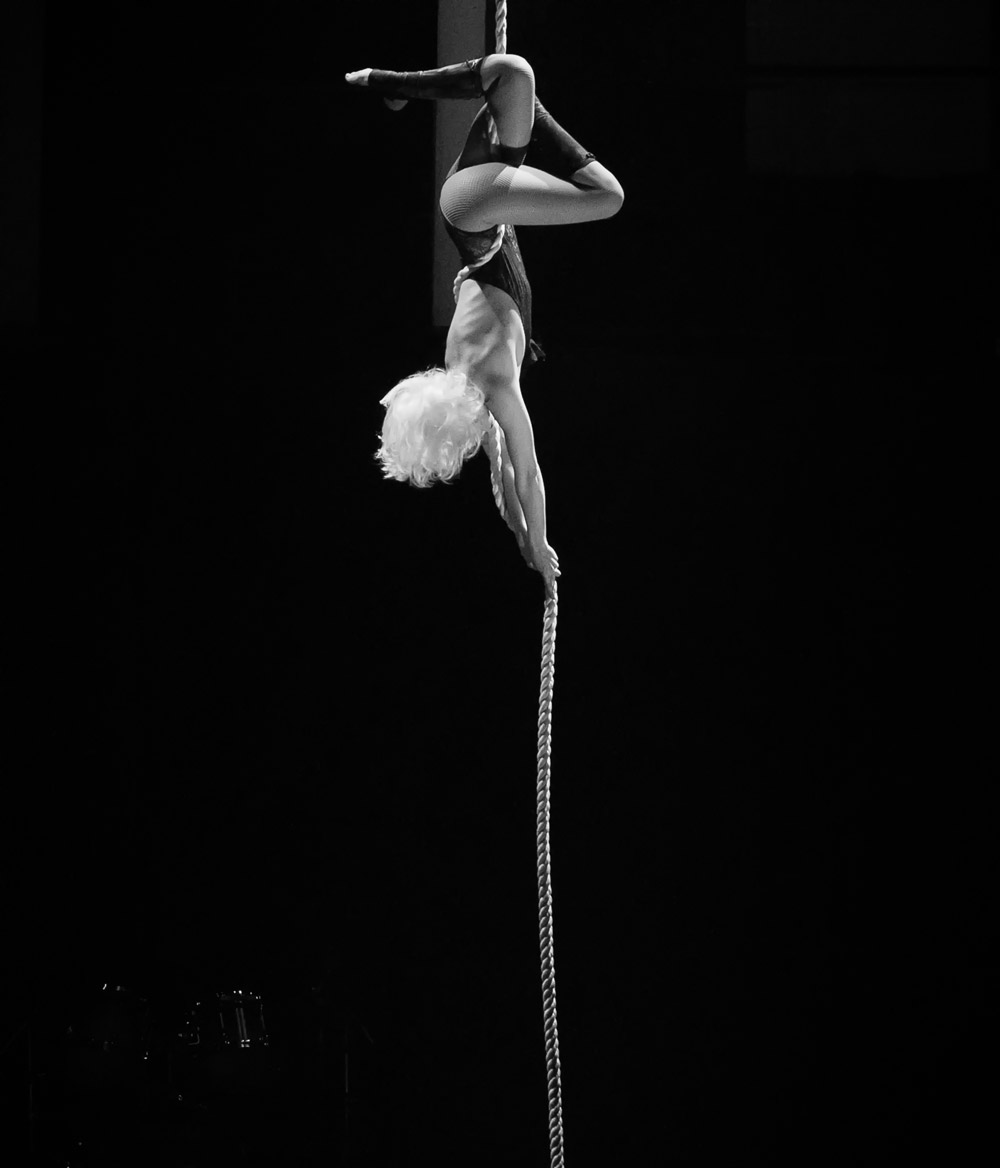
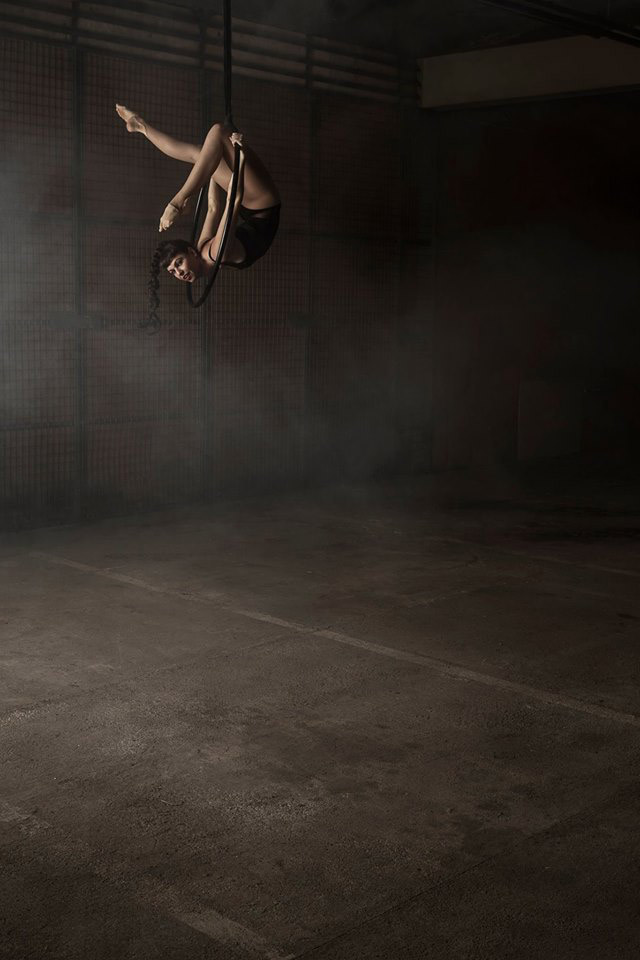

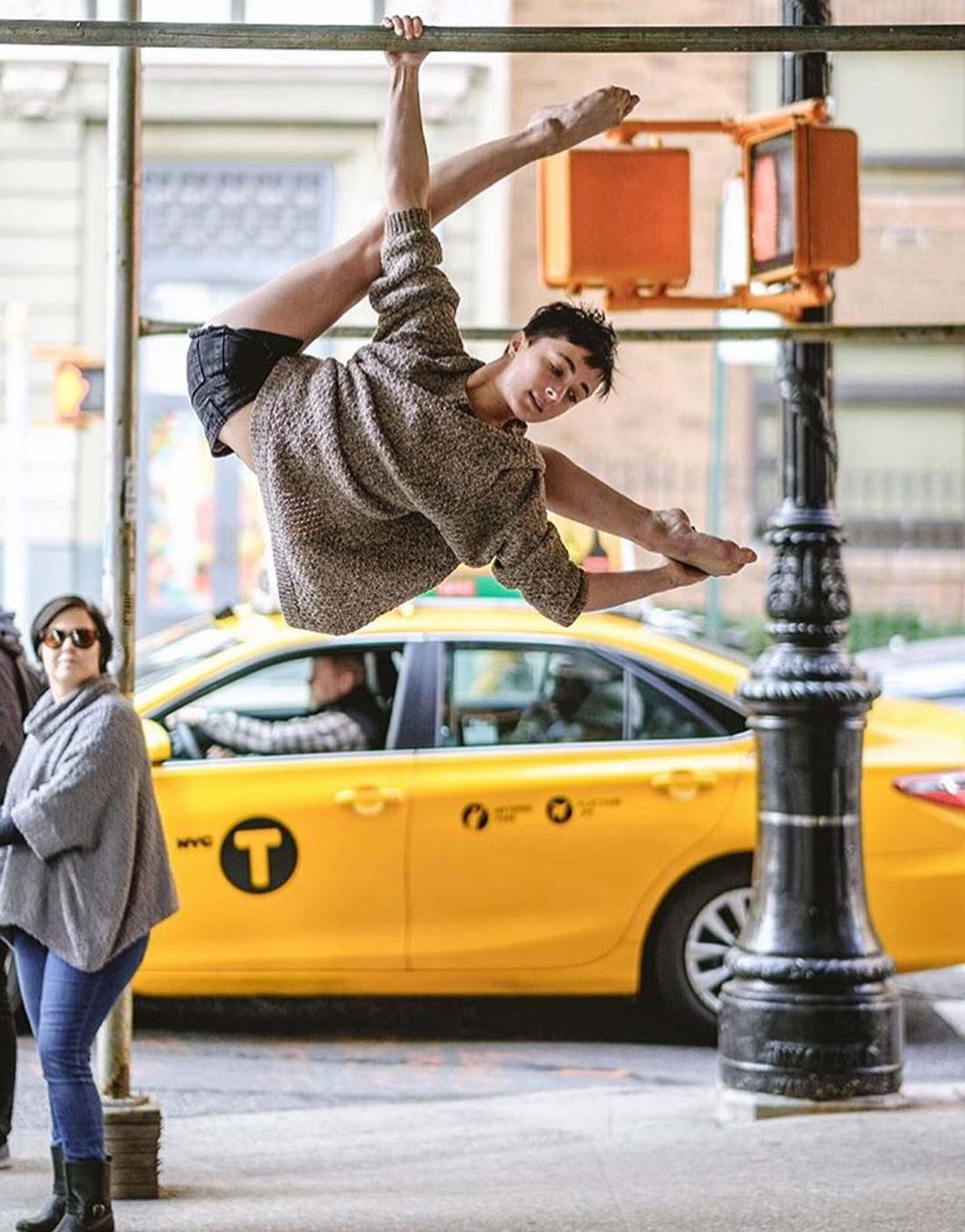
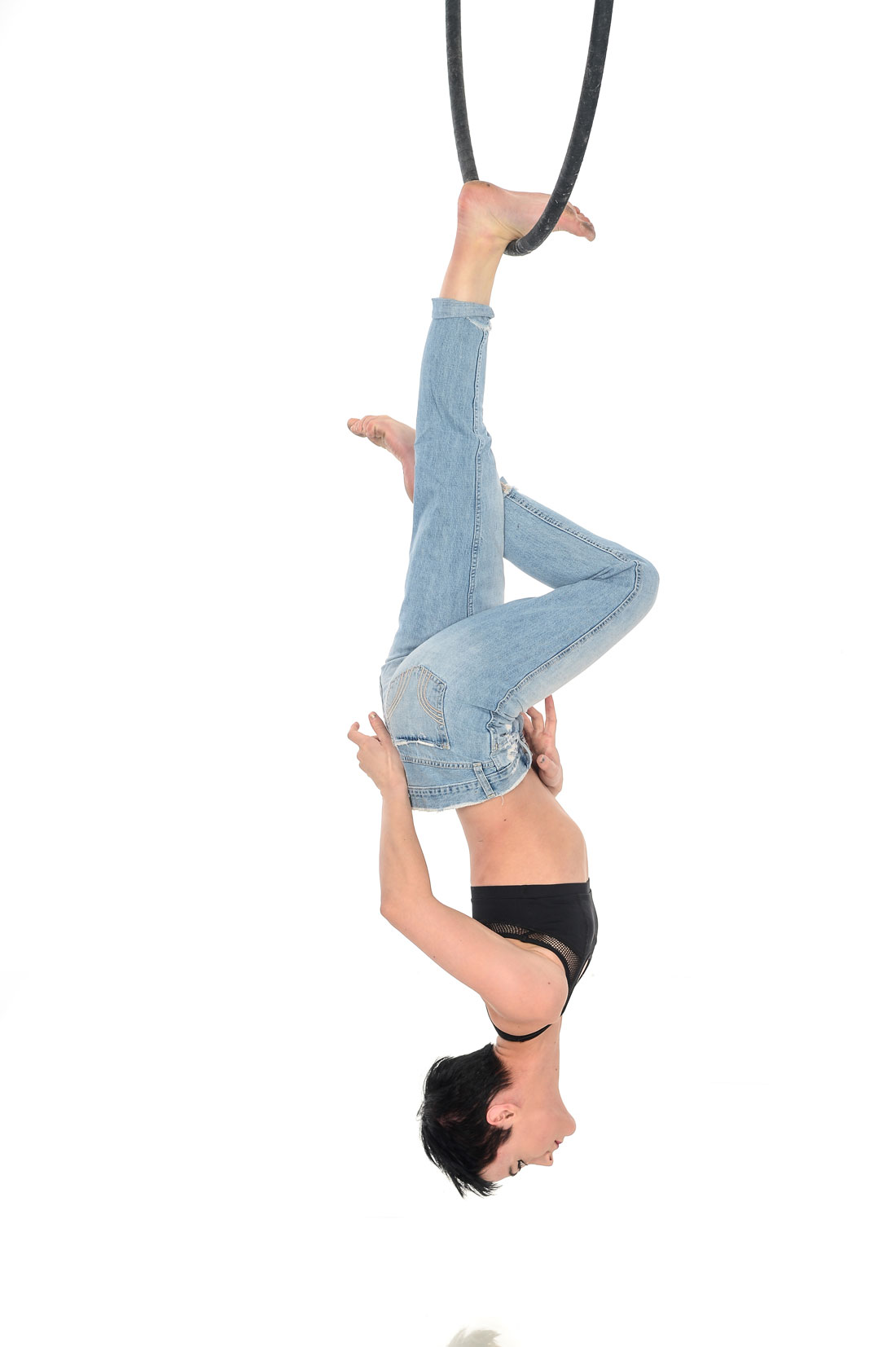 Photo:
Photo: 